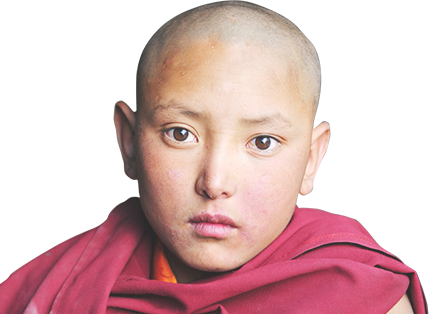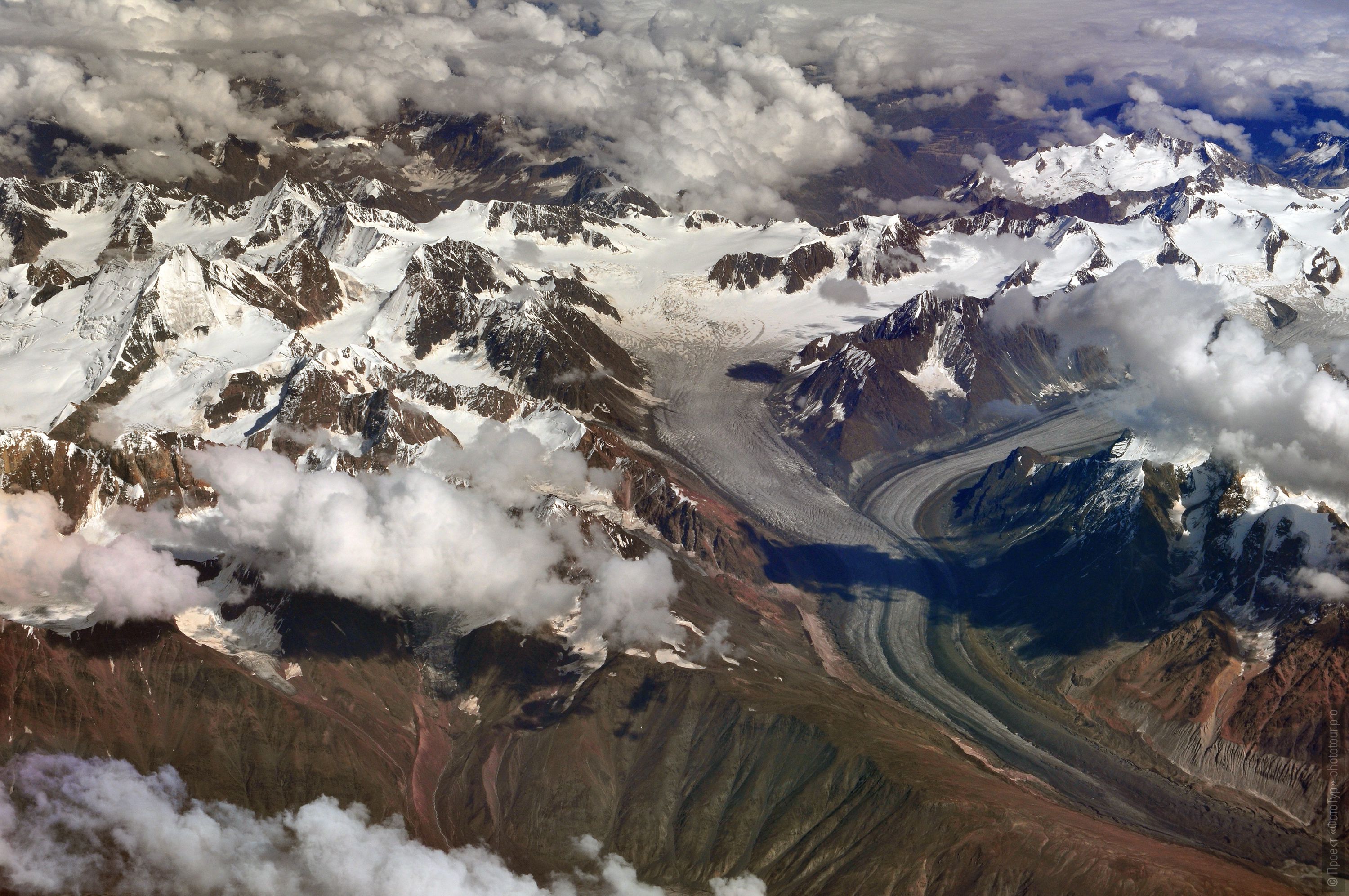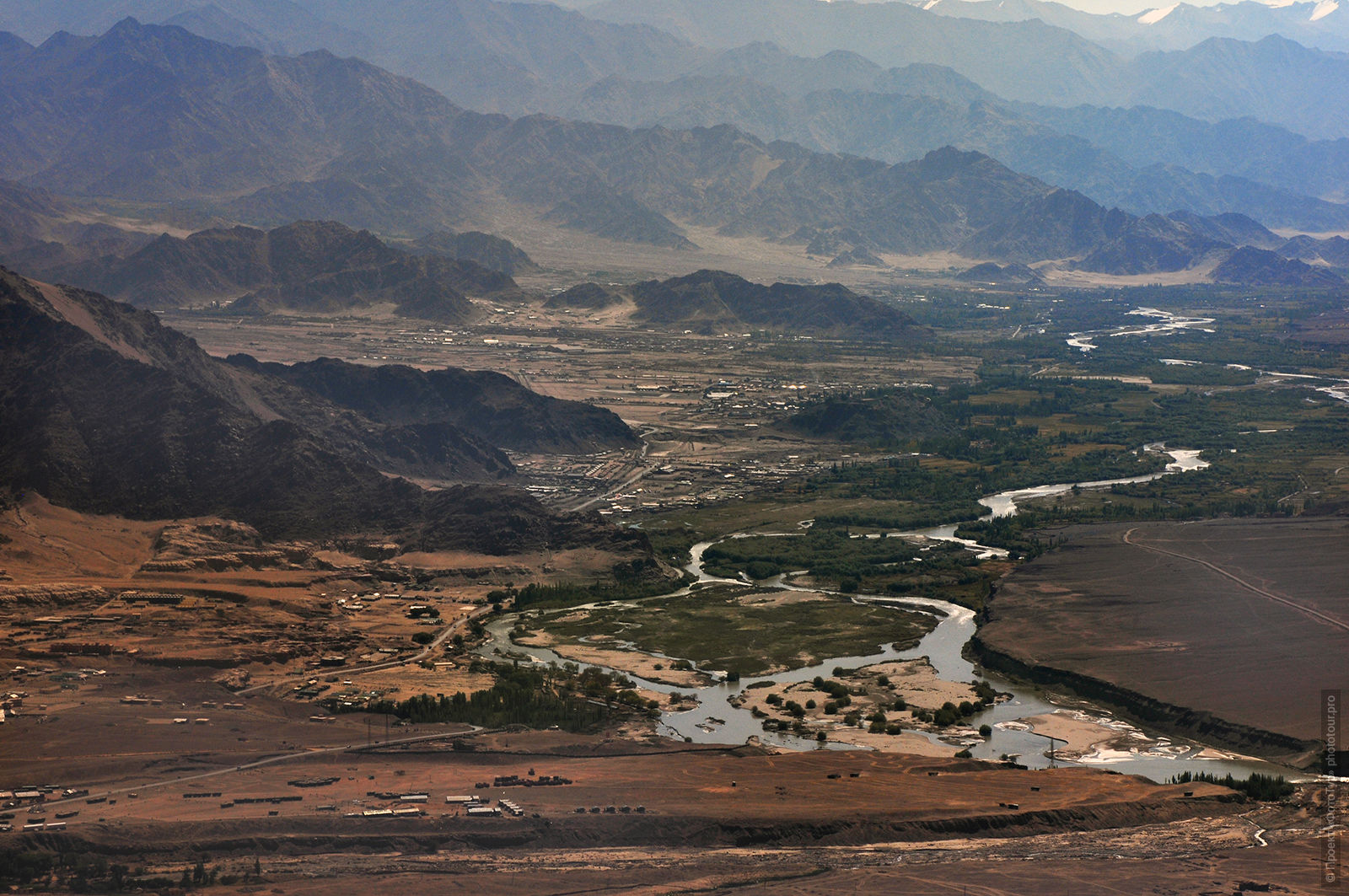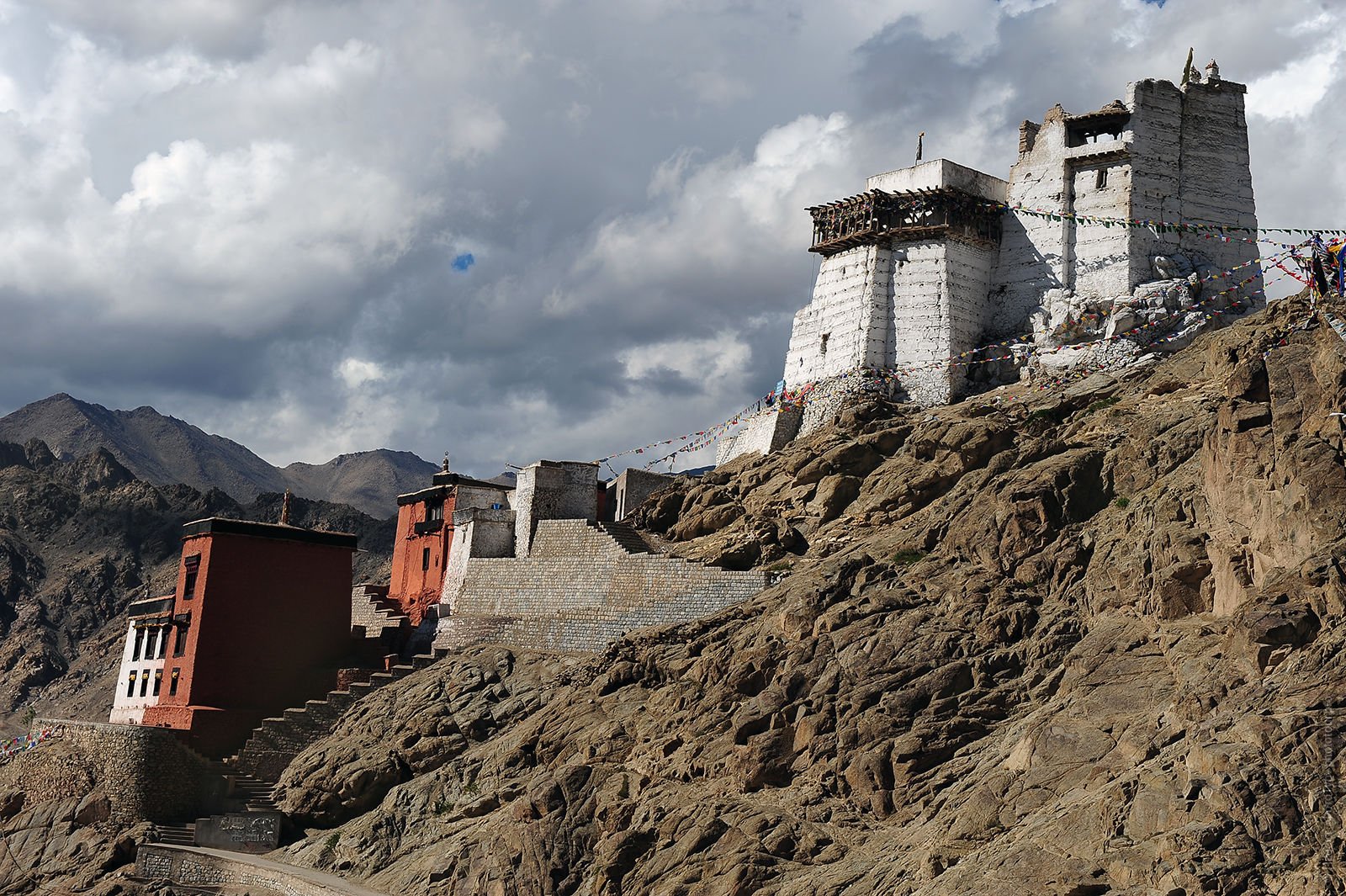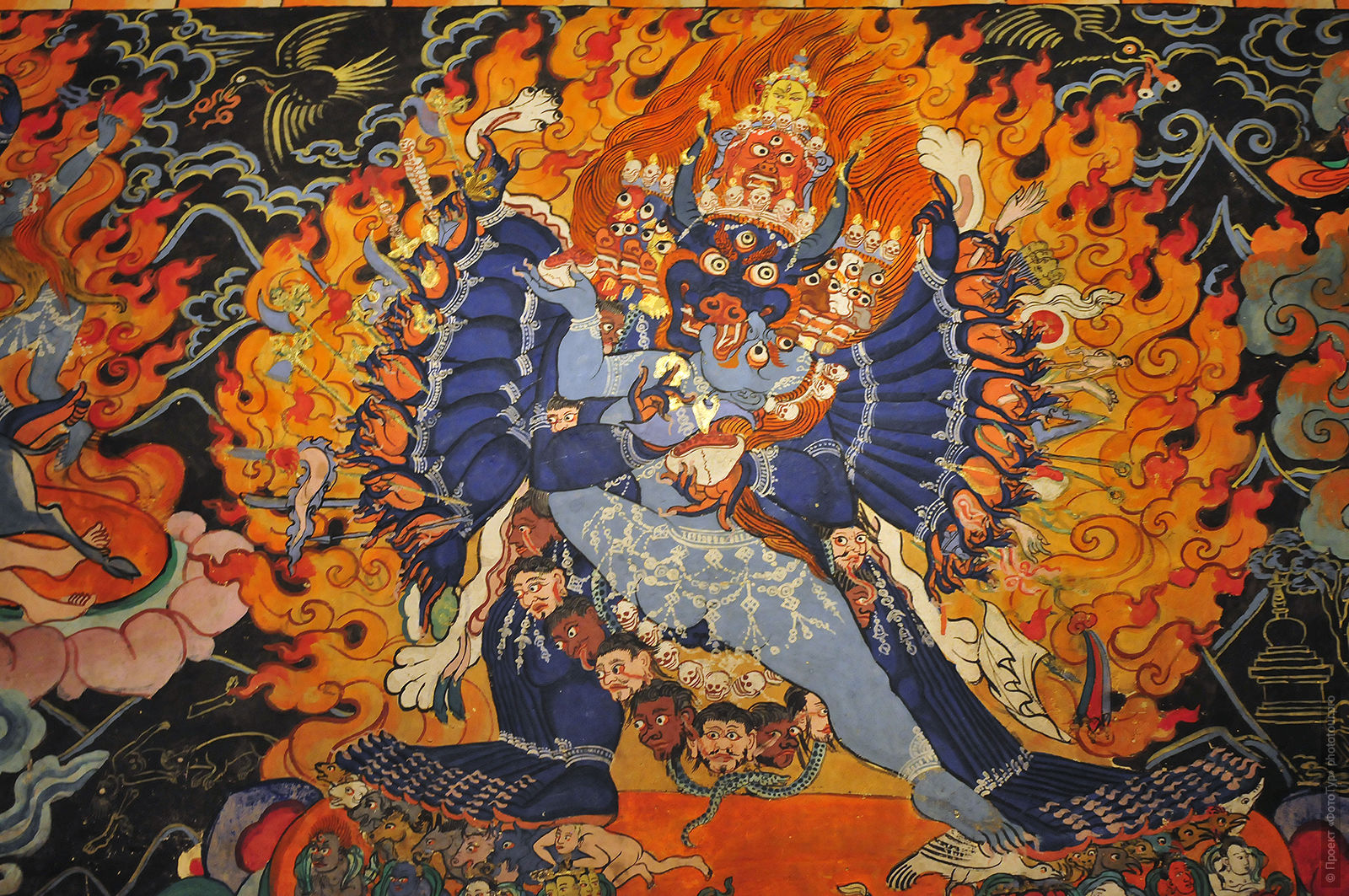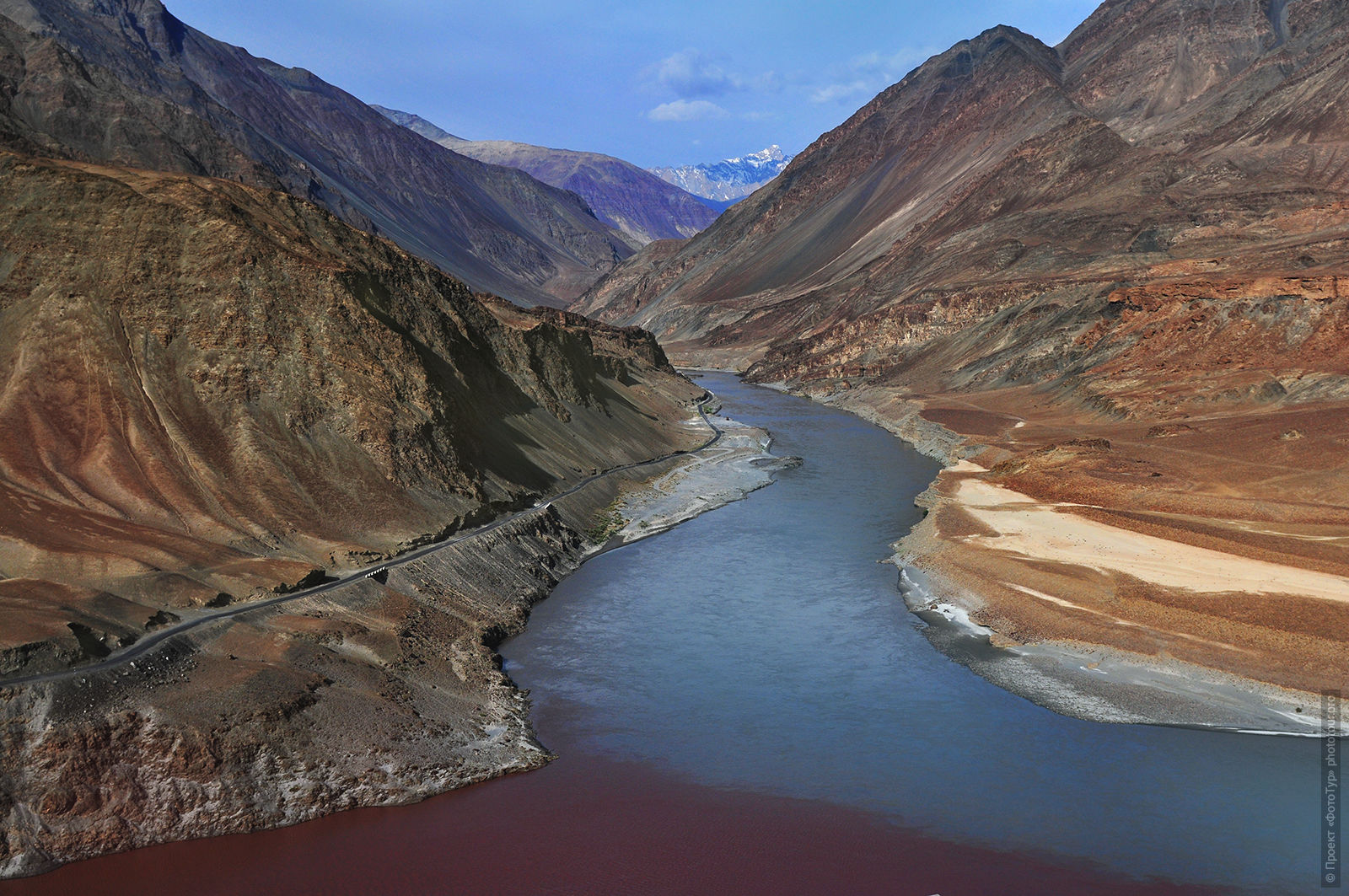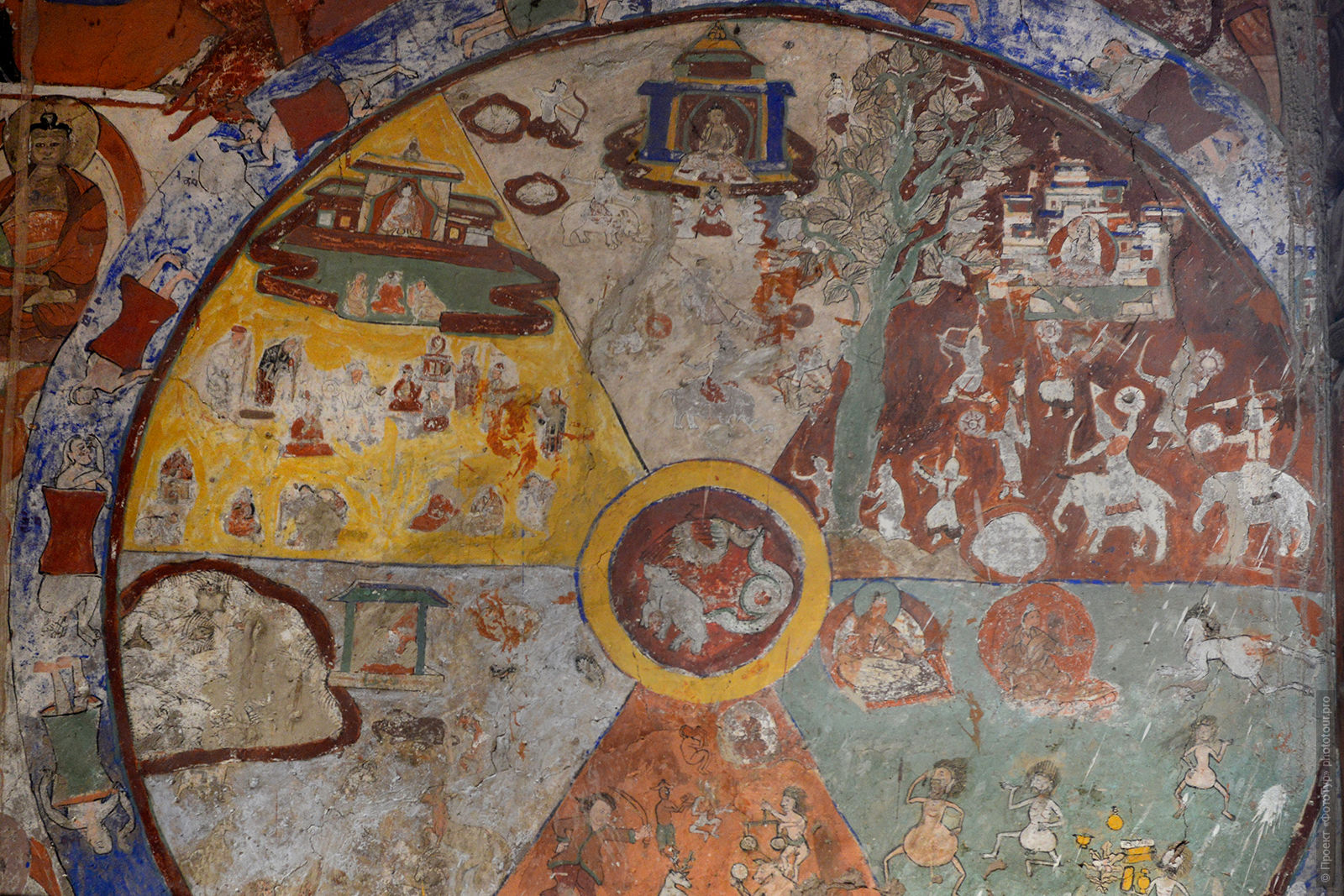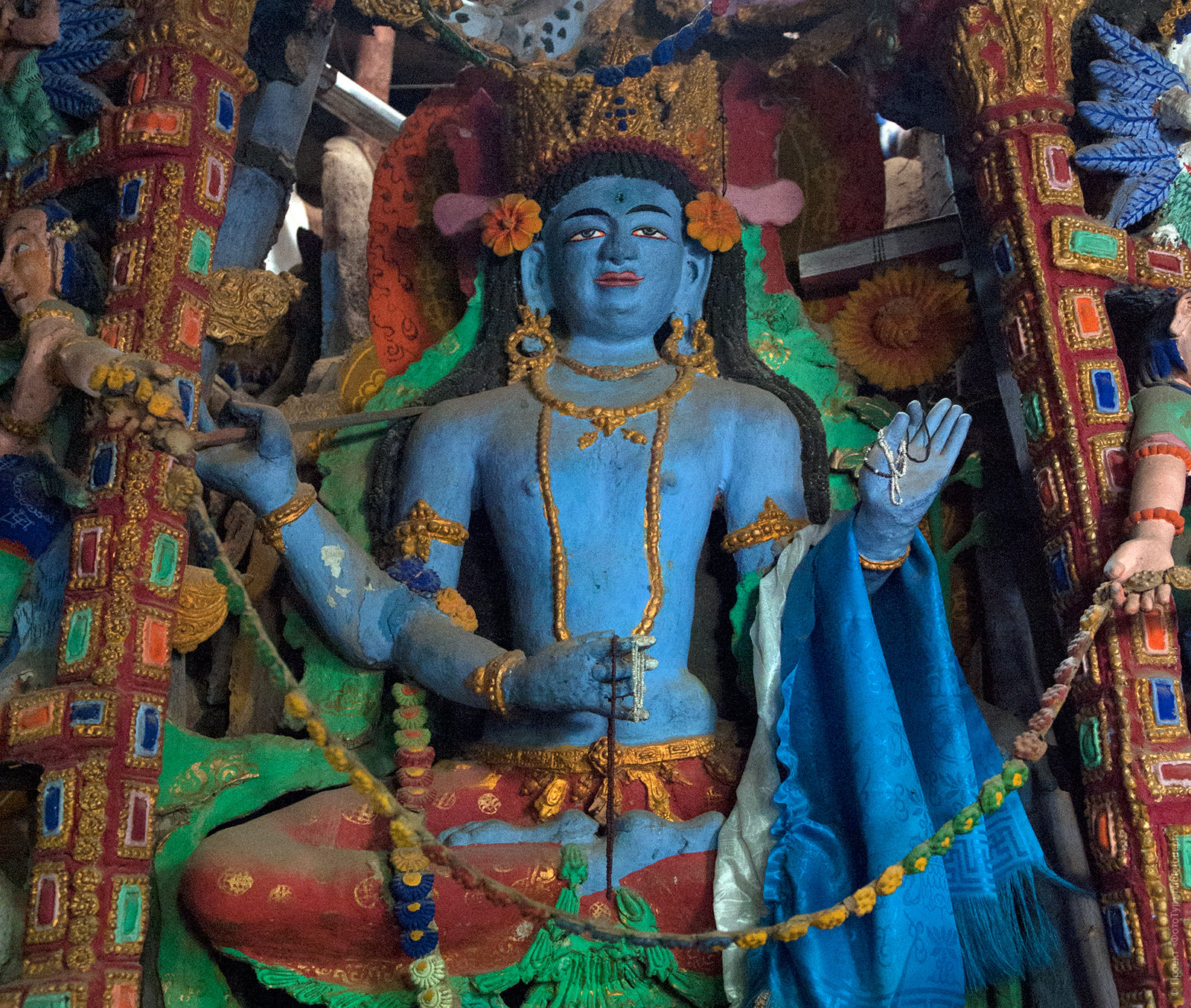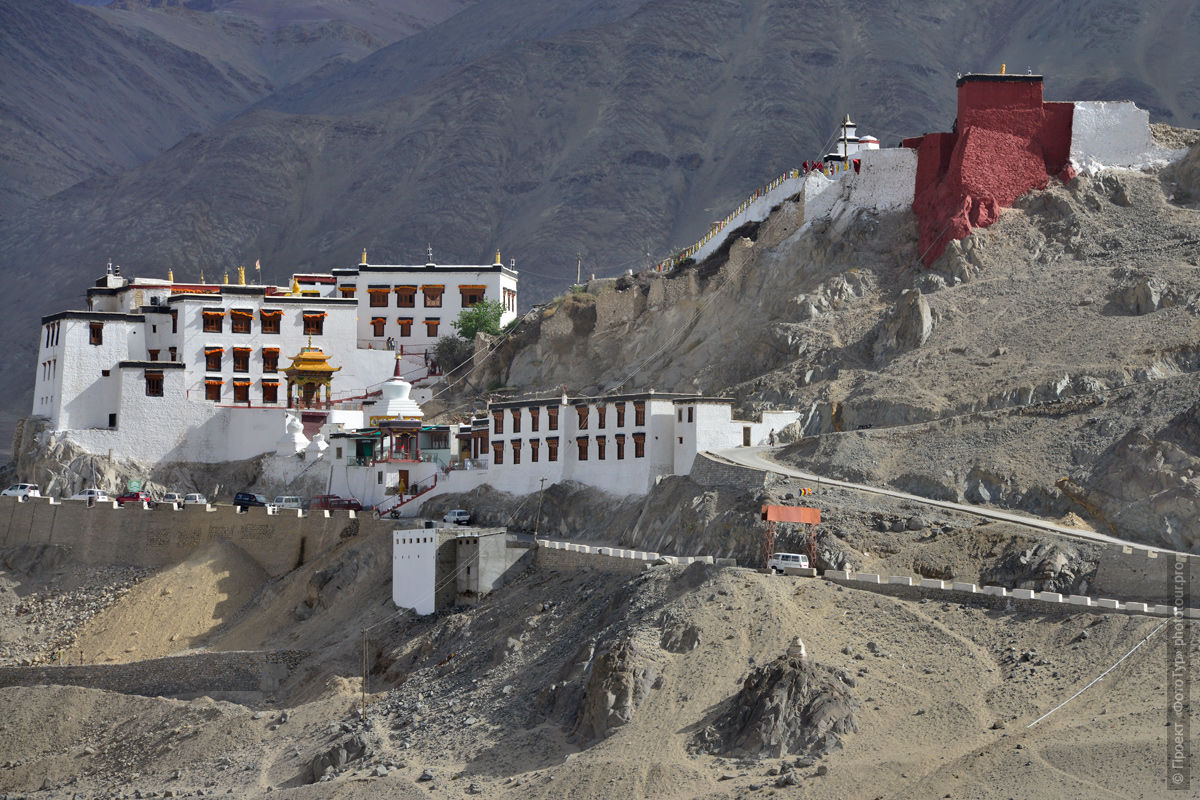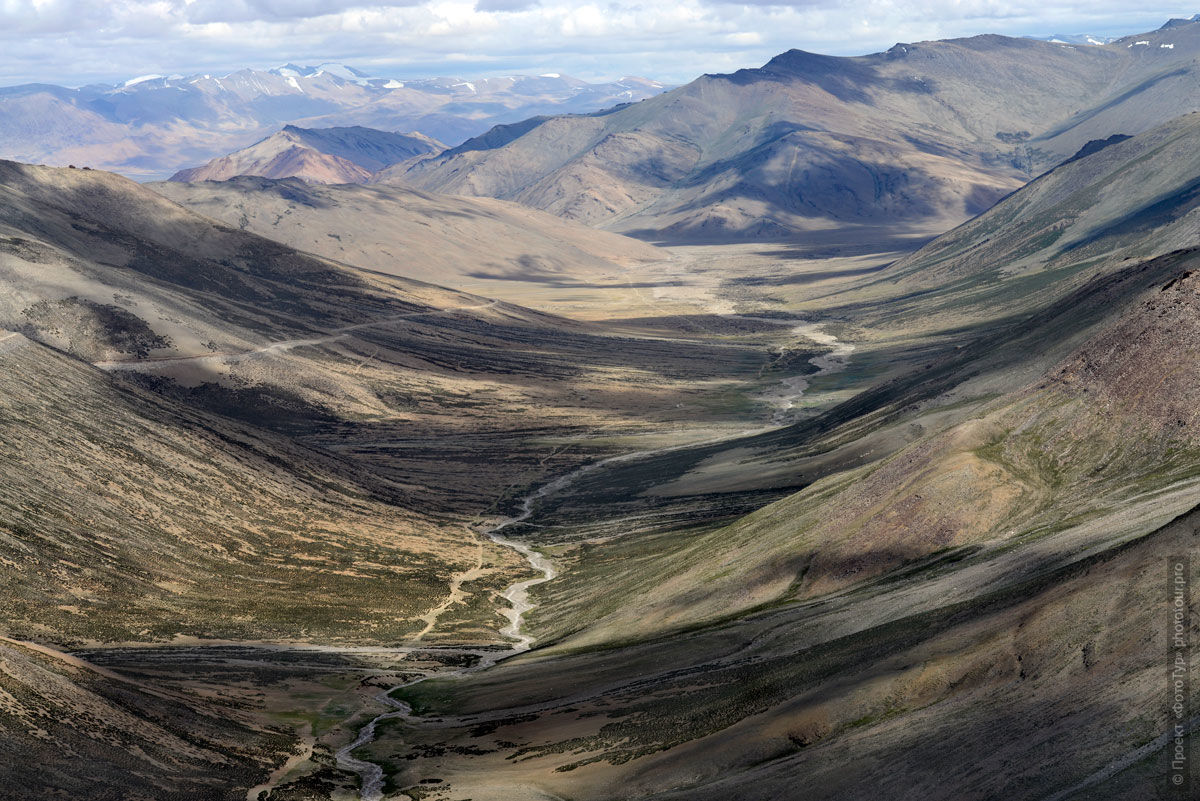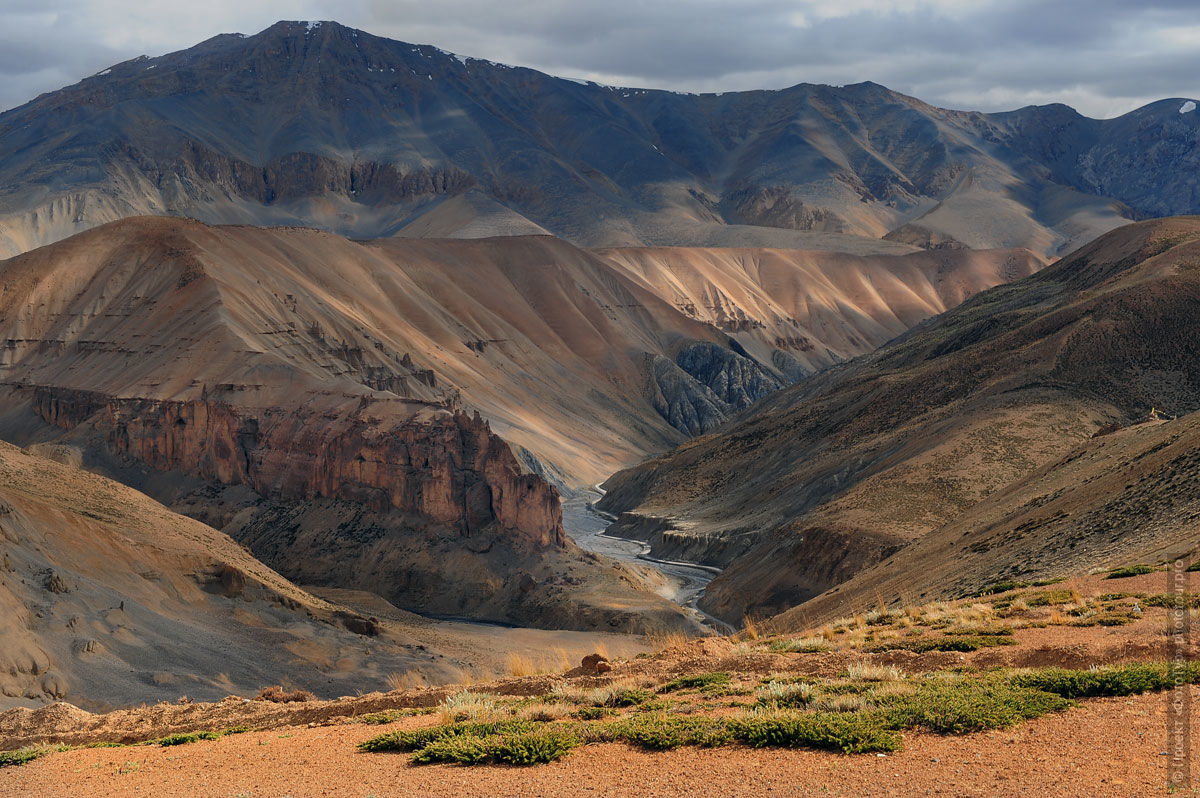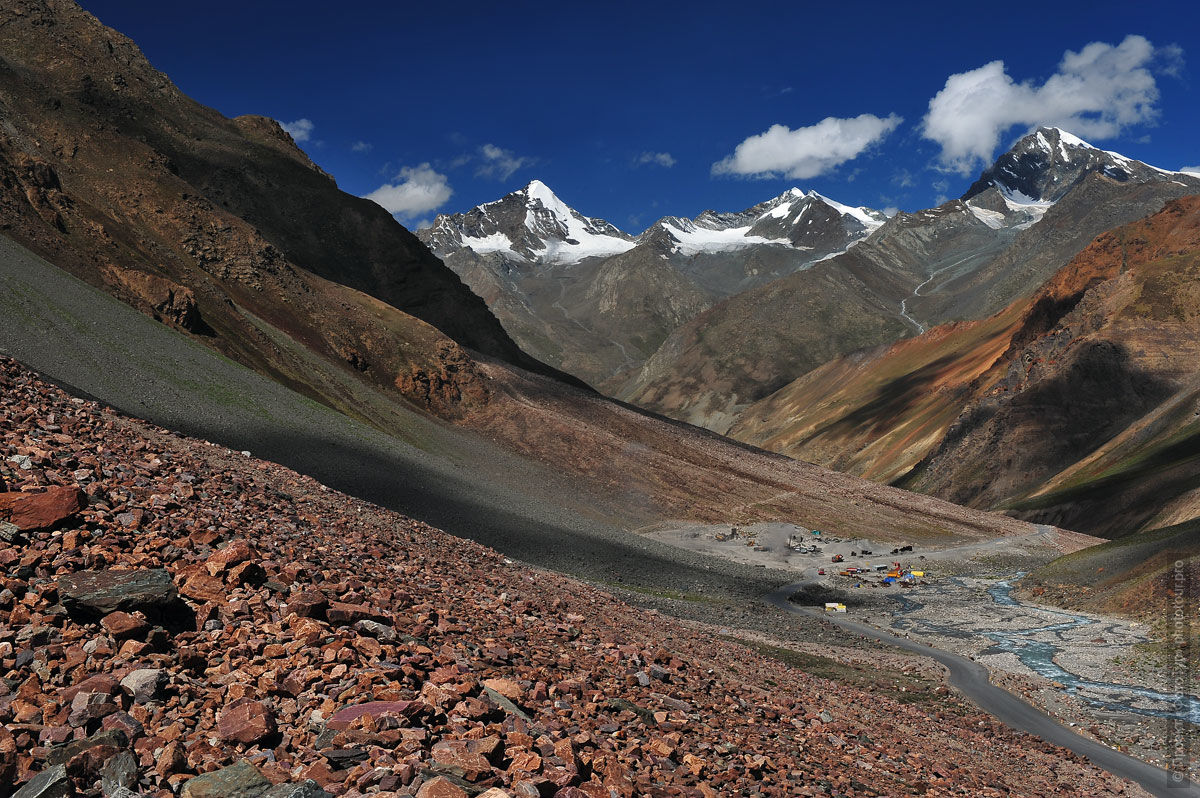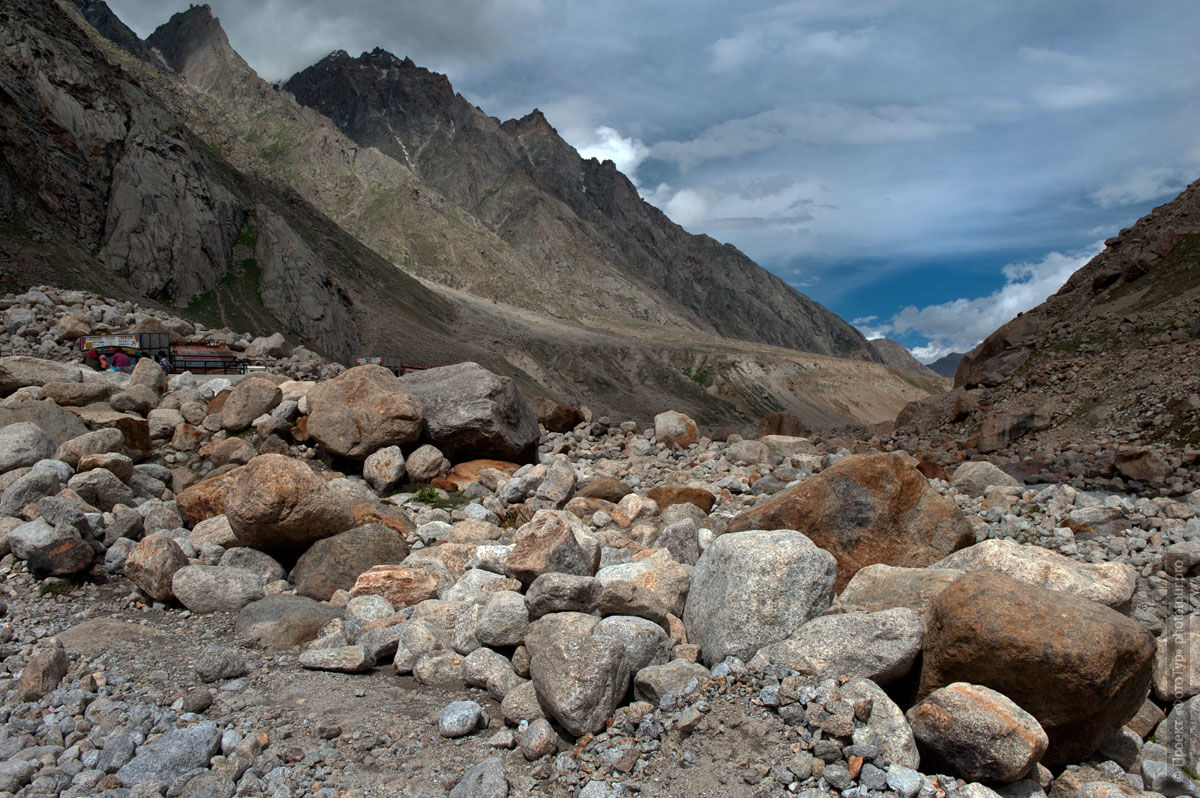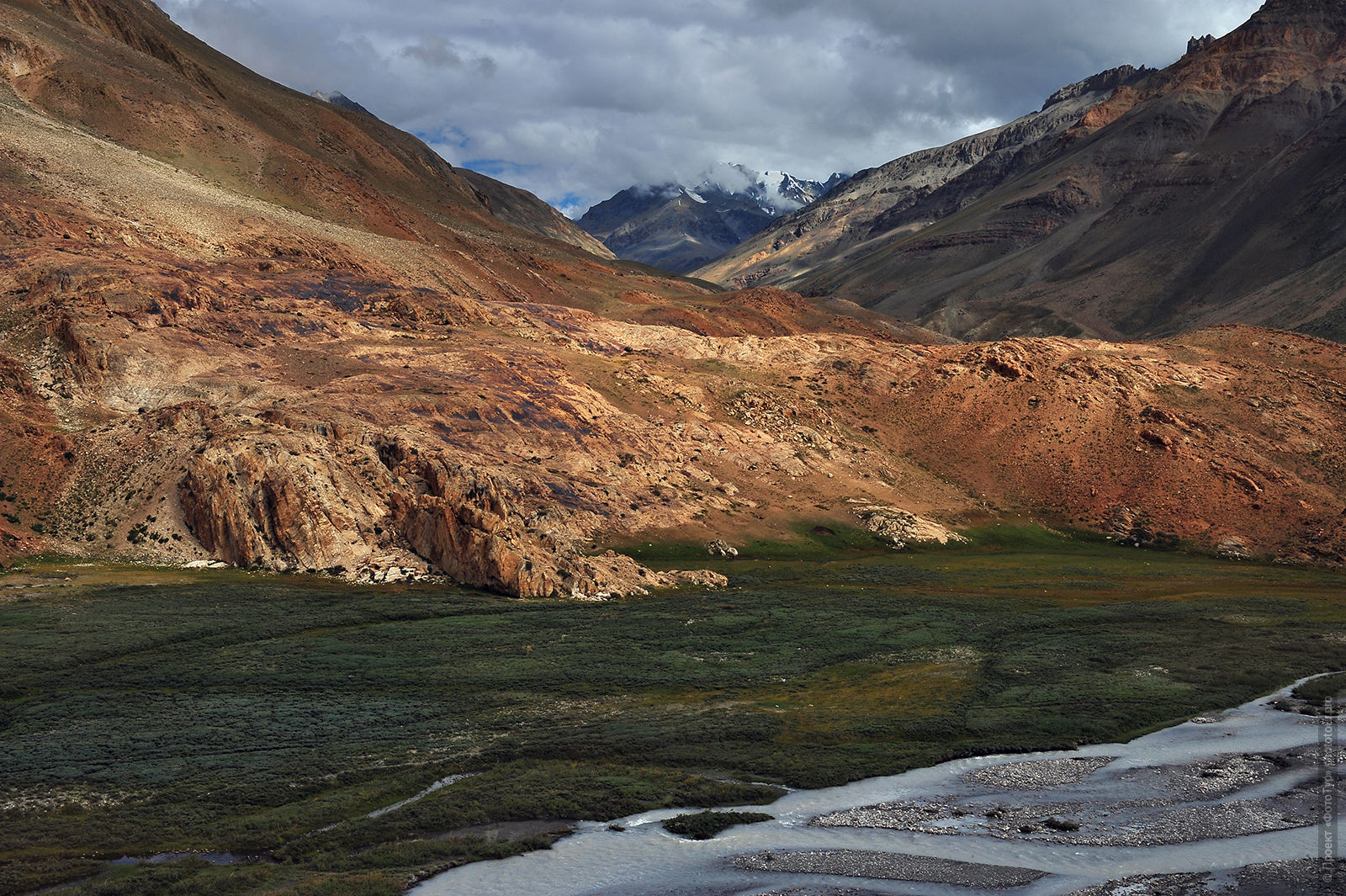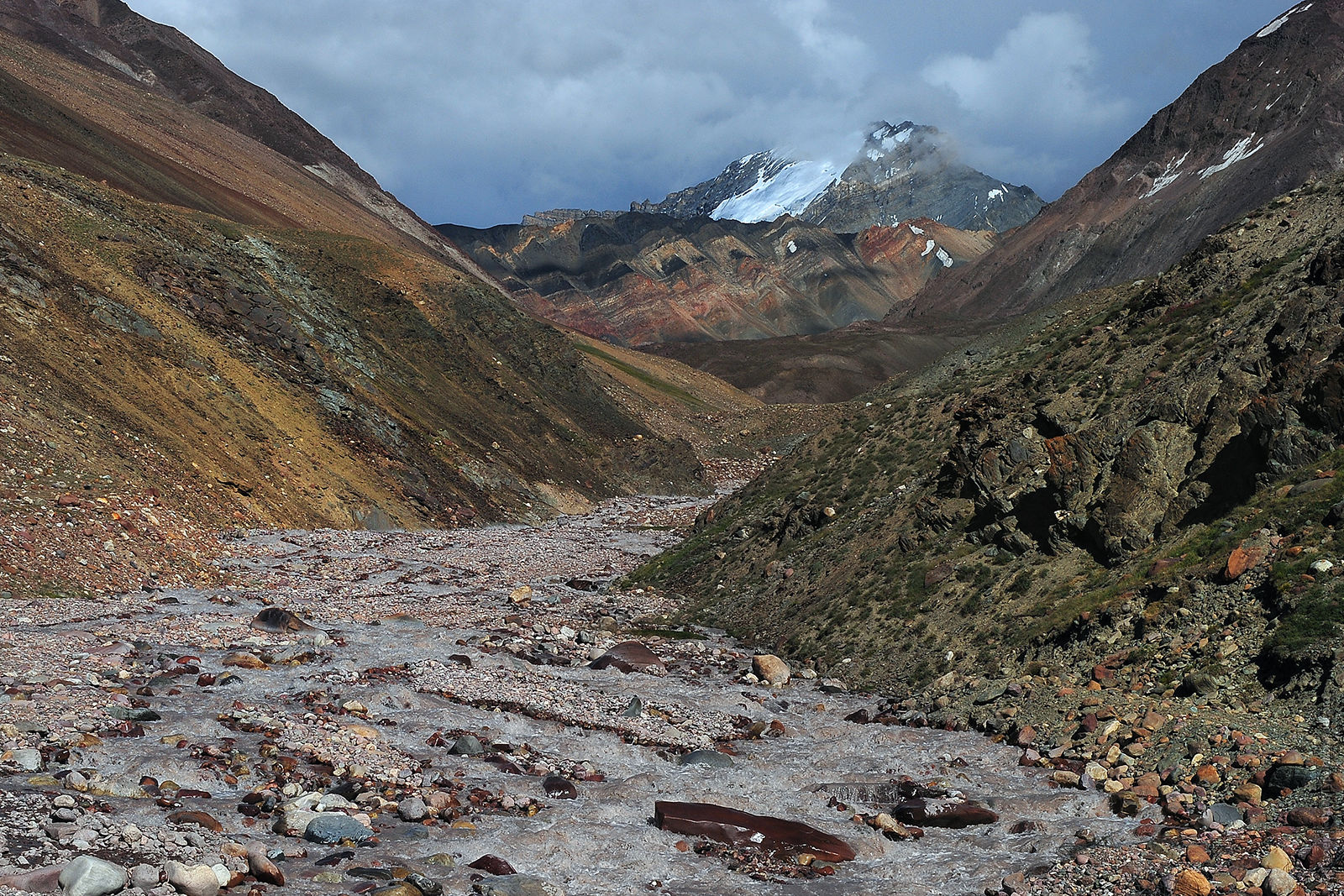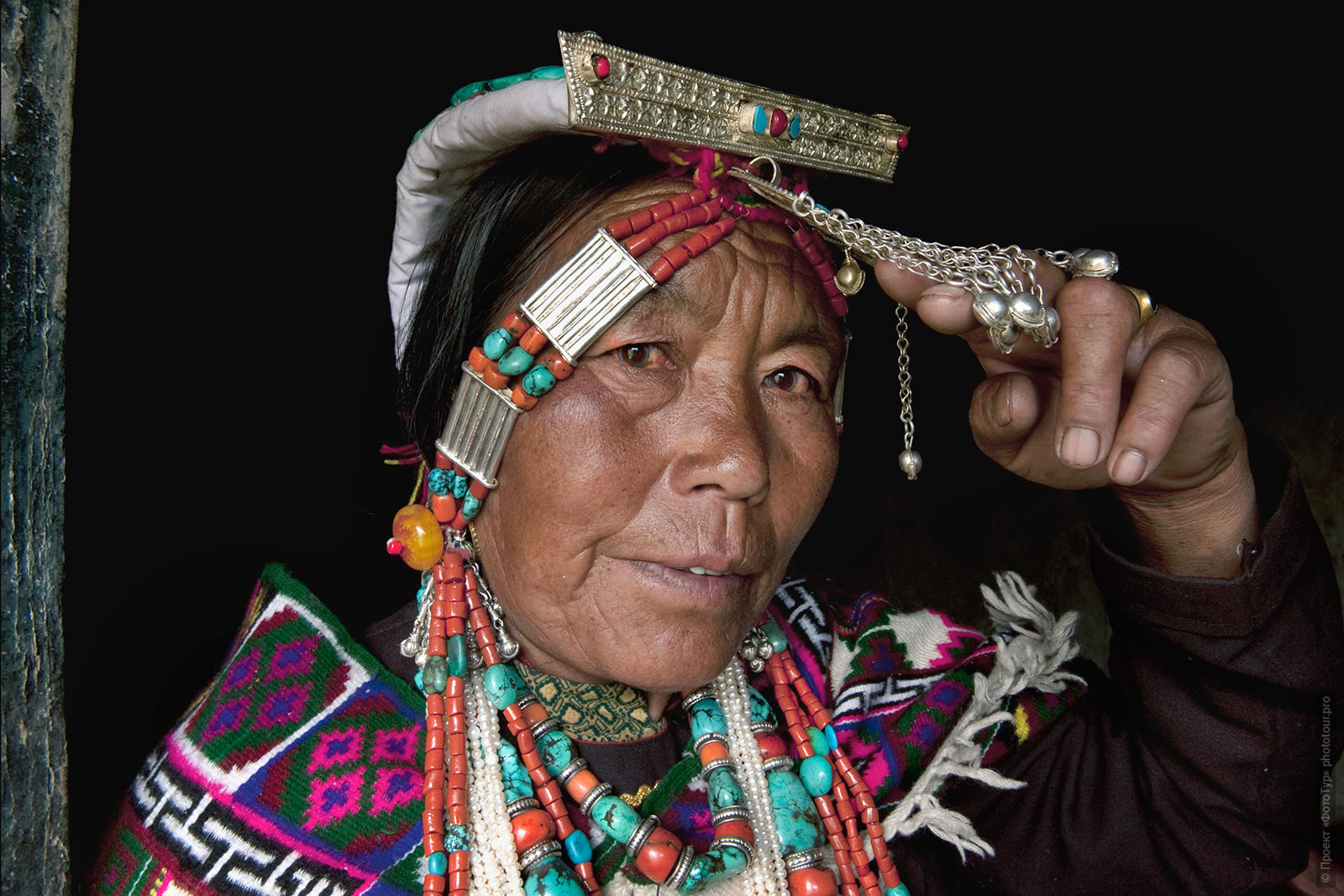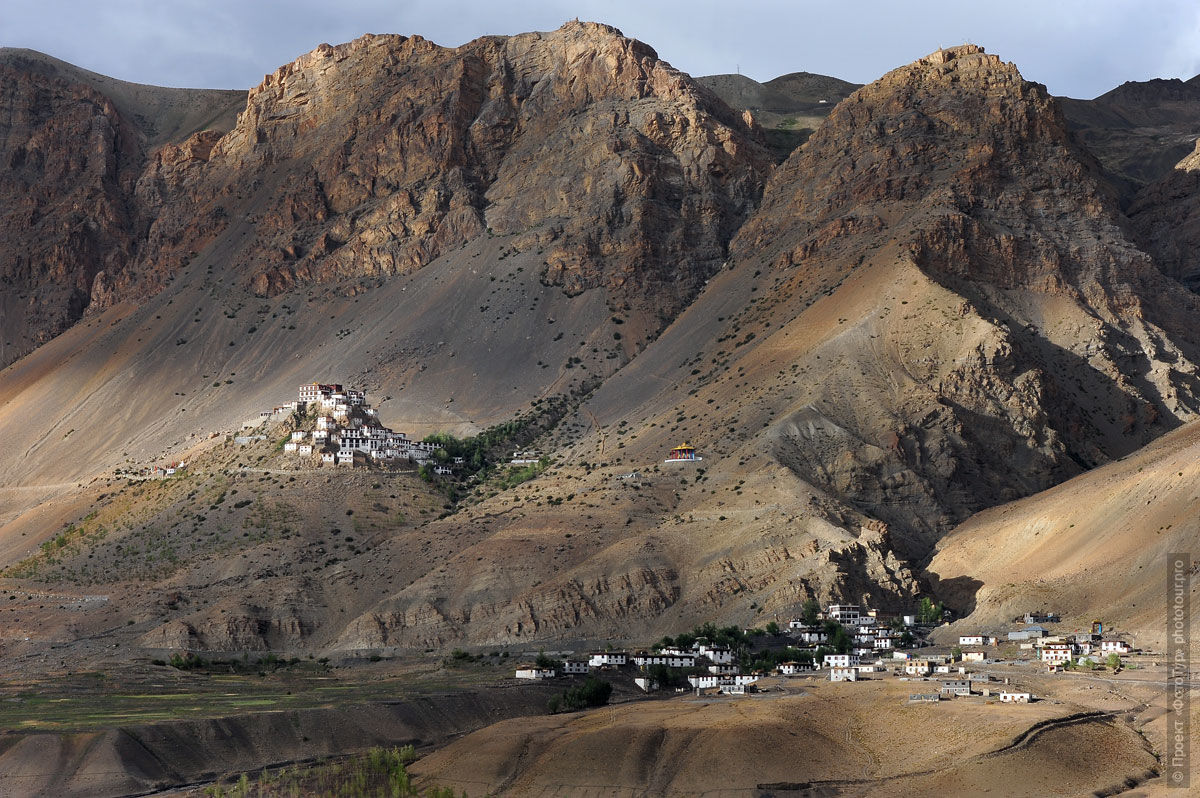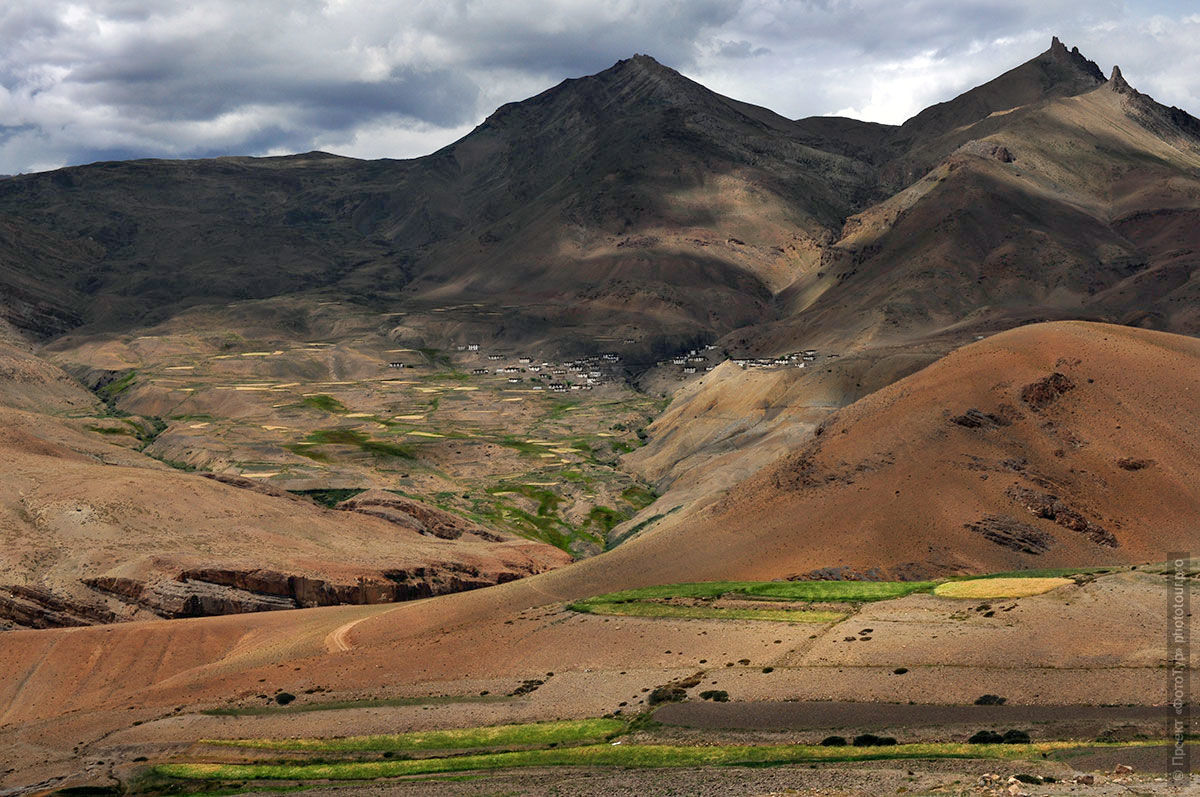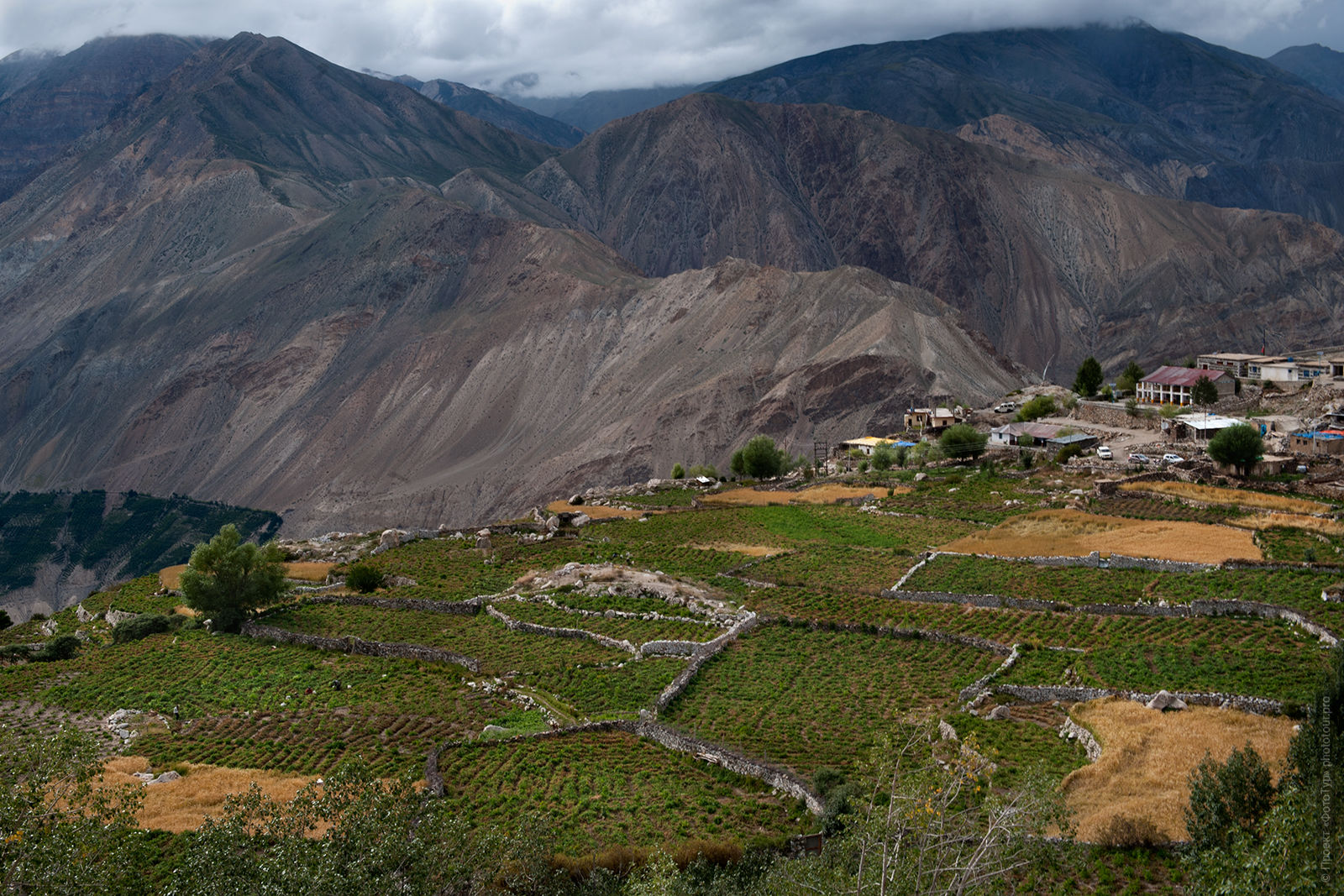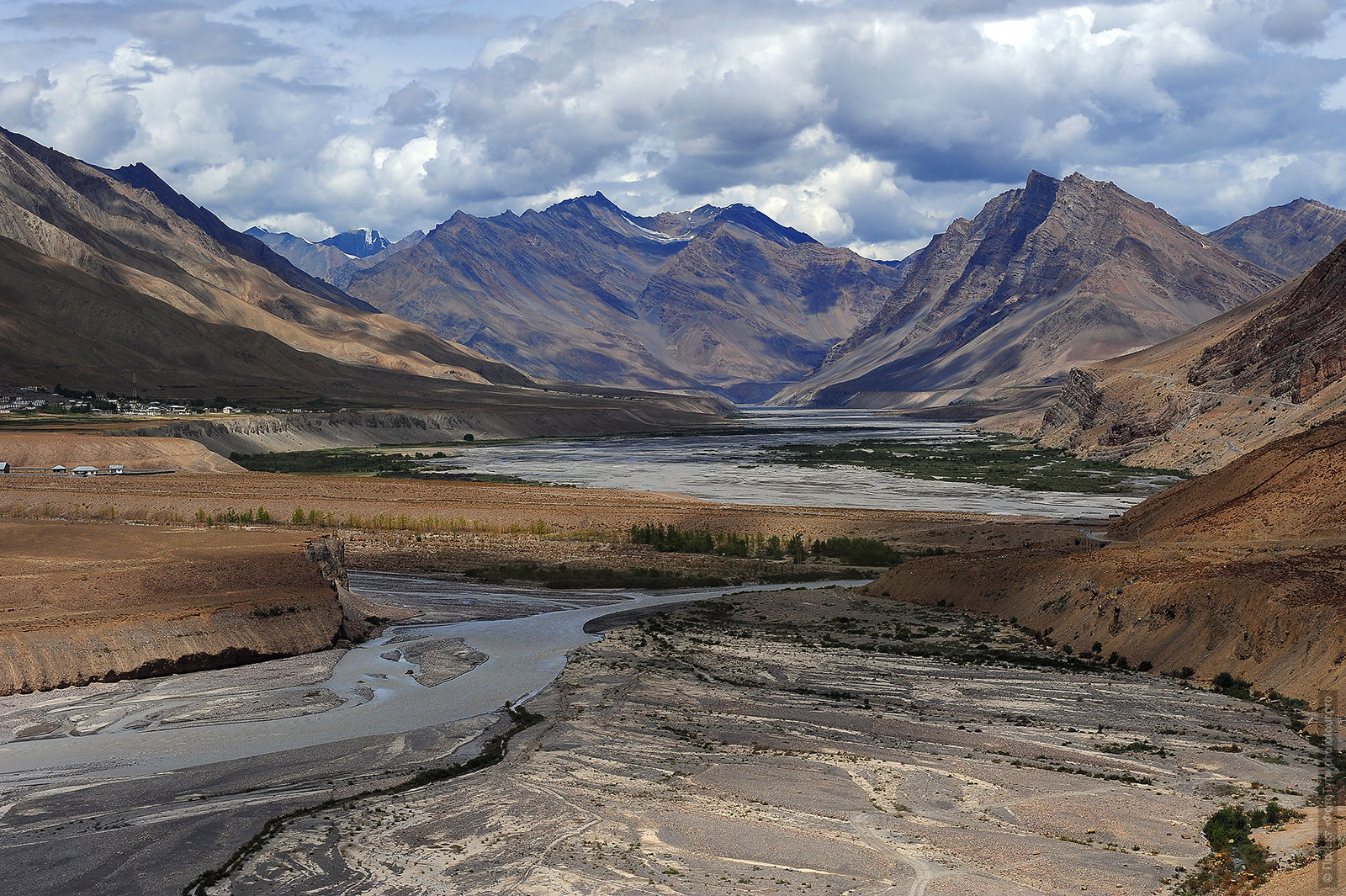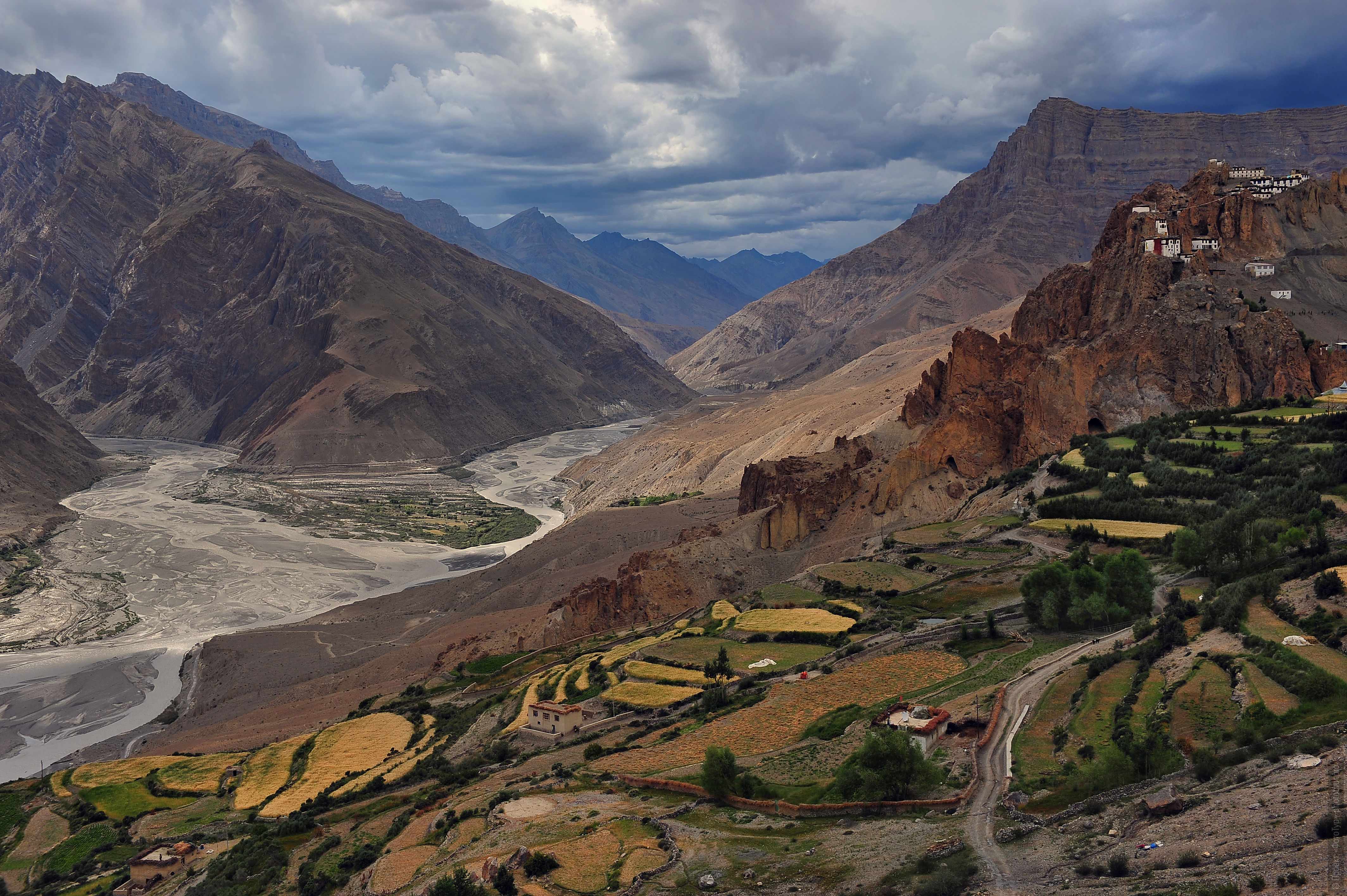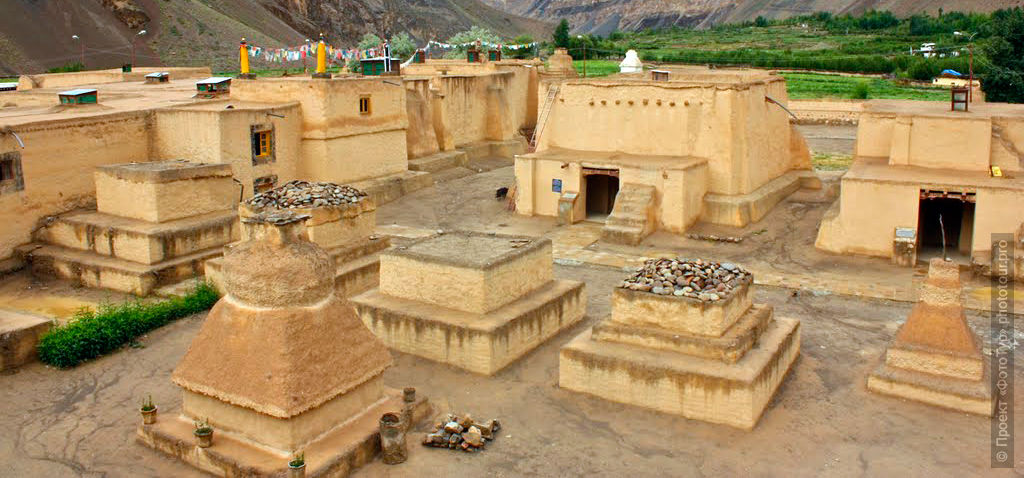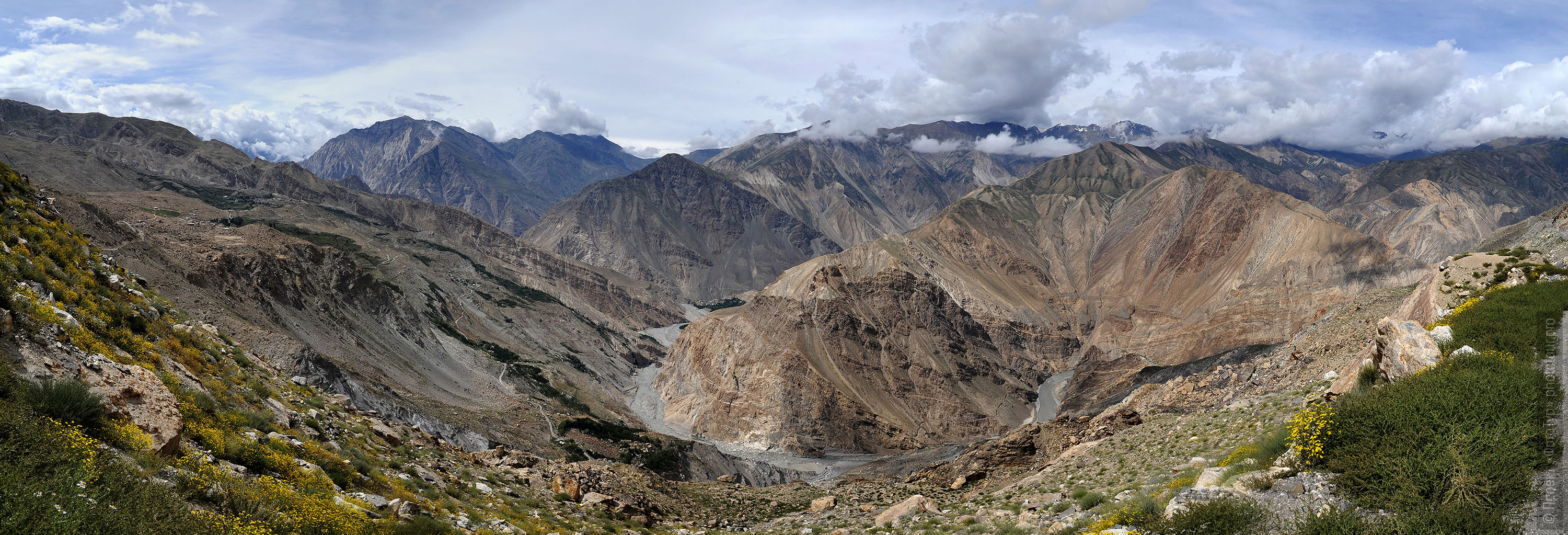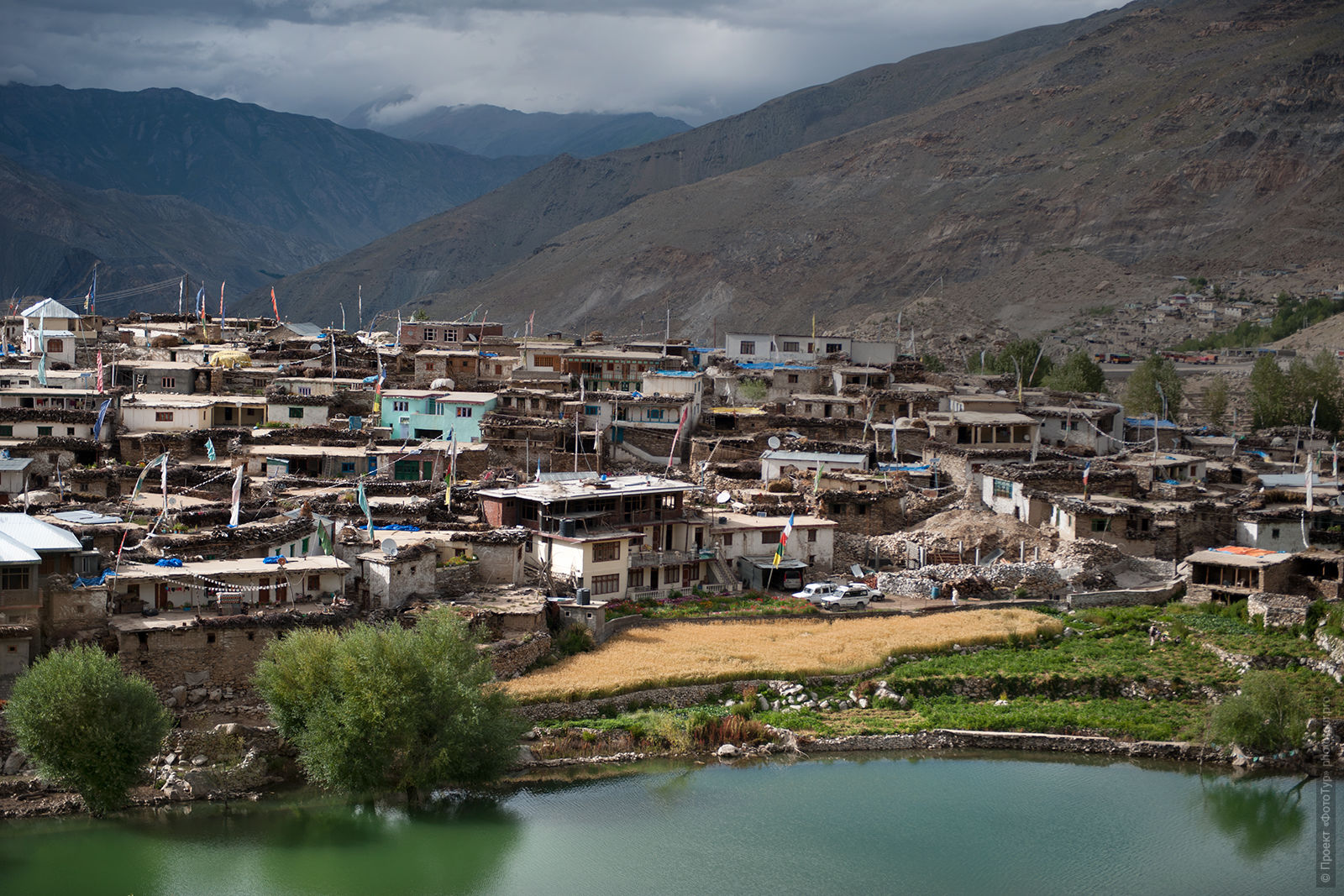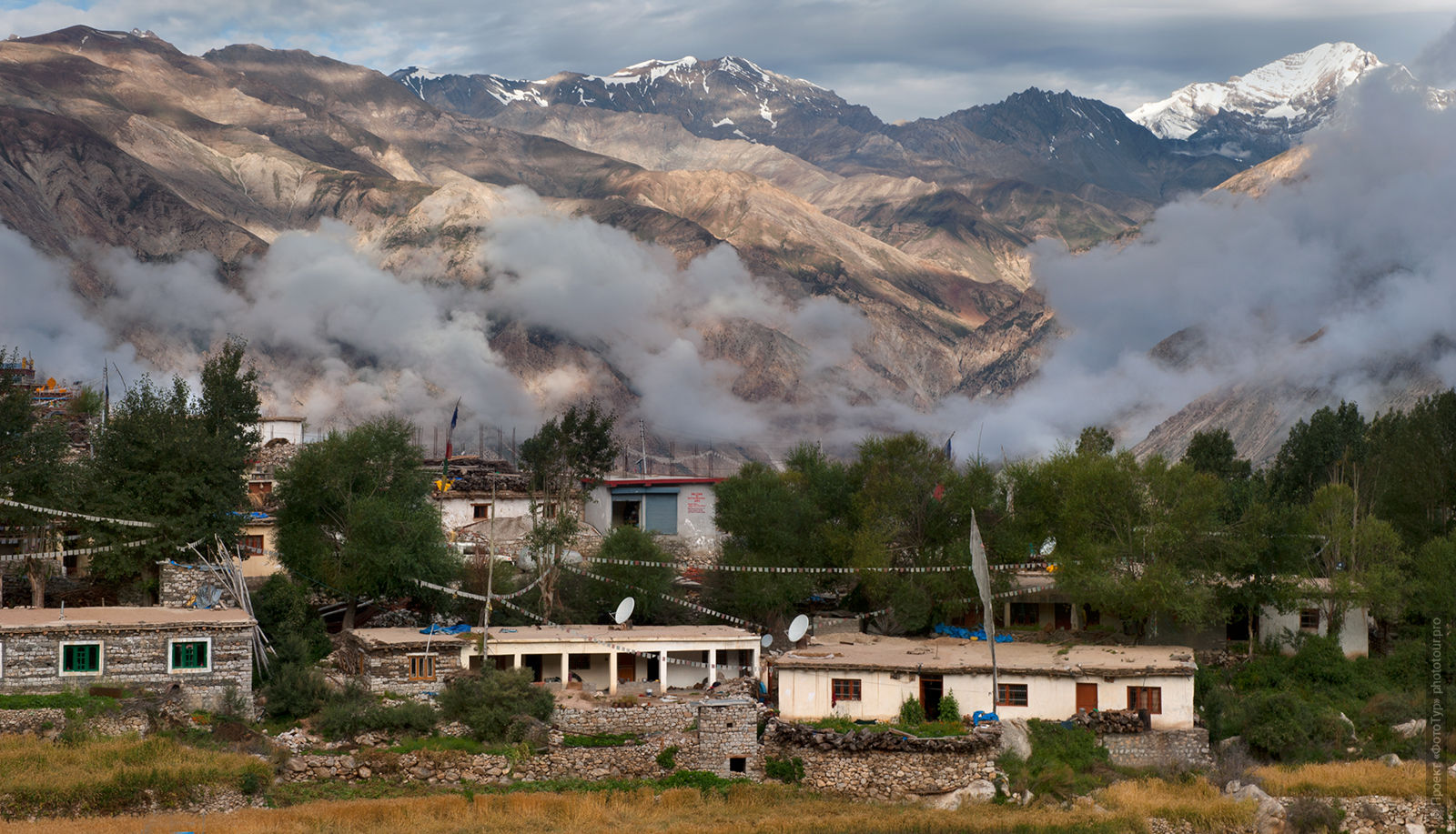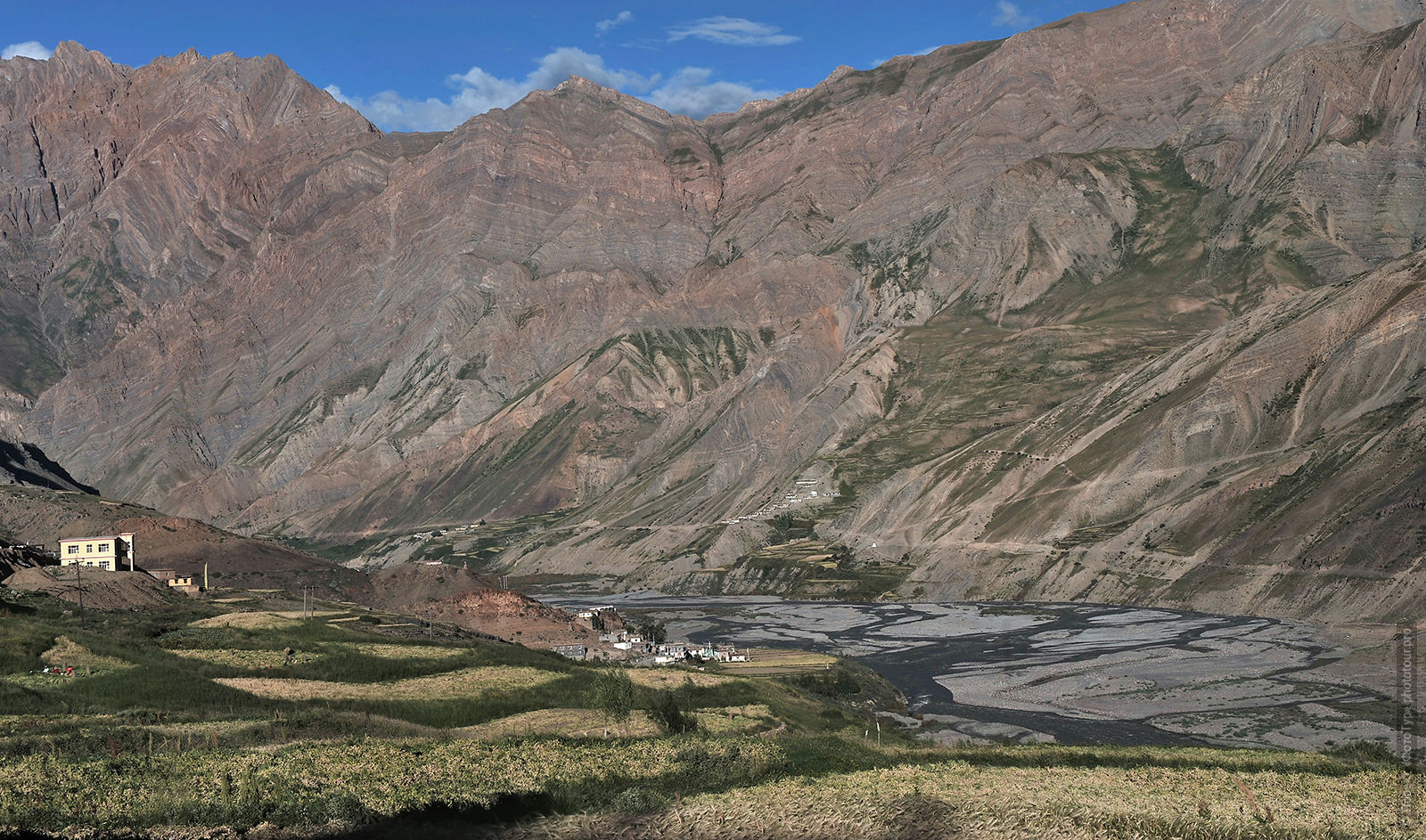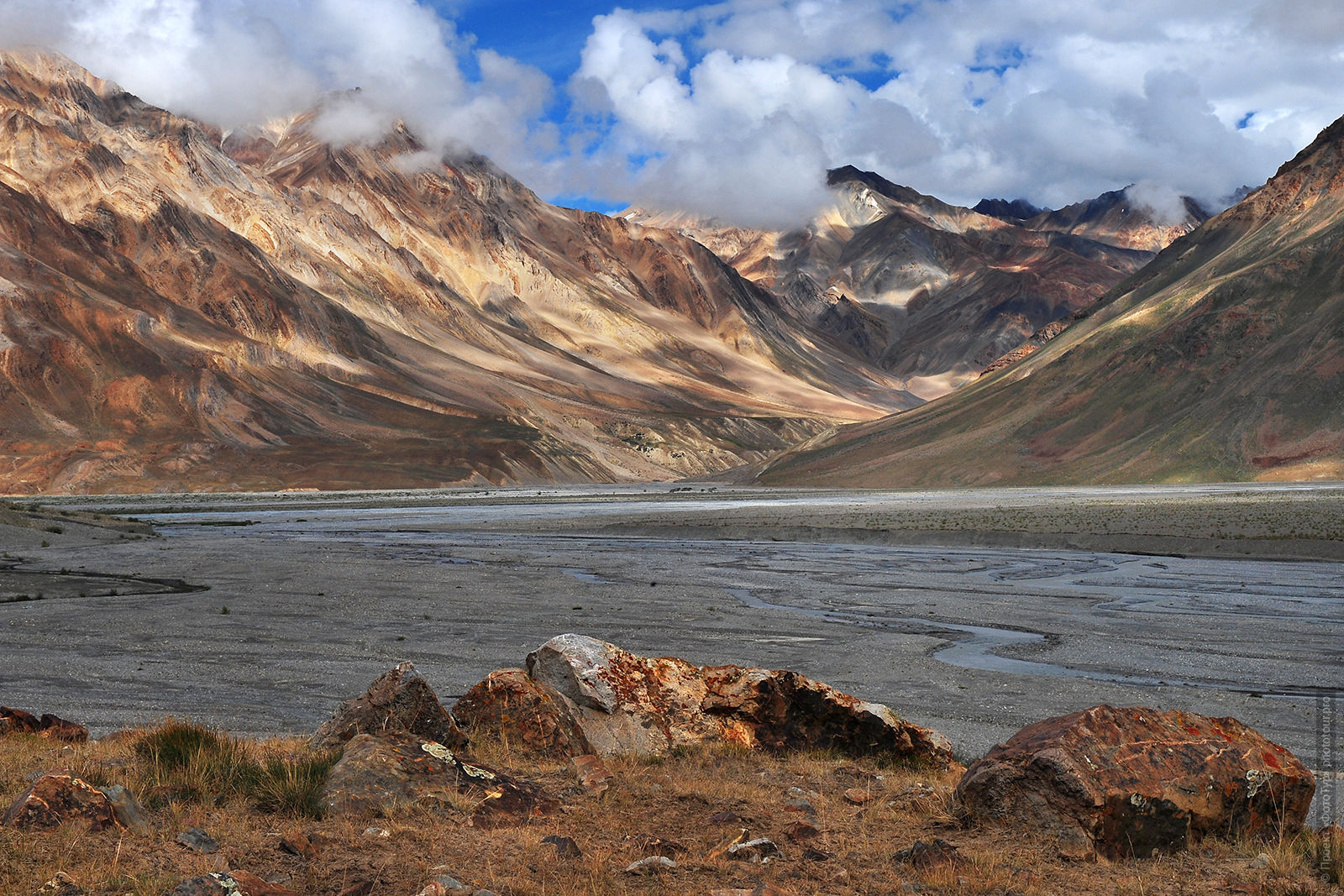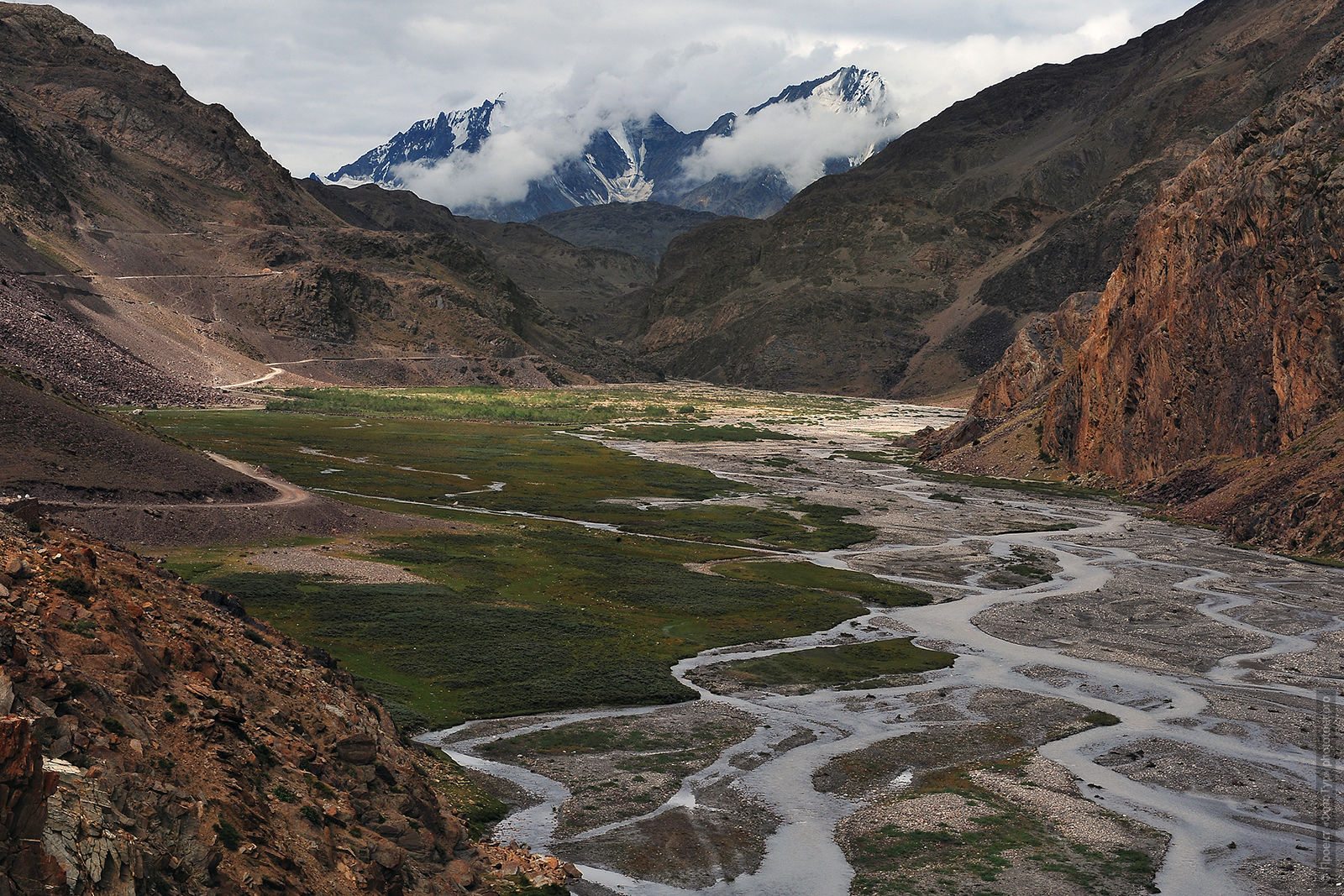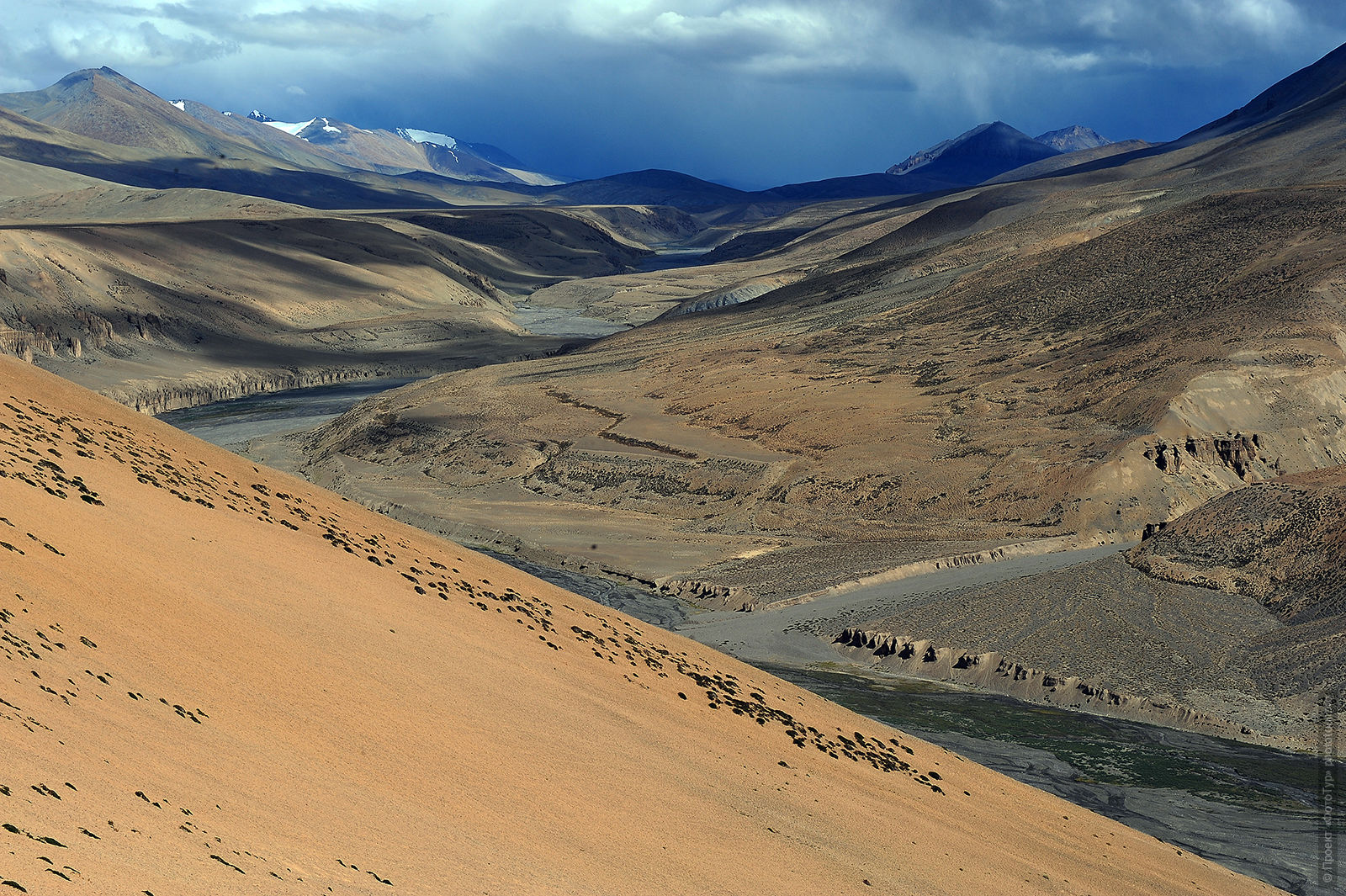The Booking of your participation in any journey takes place in three stages:
First step: Filling the application form for participation in the tour. Be sure to include your full name, We work officially and all accounts are registered. Please write your contact so that we have the communication wit you. After your application come to our website - the site administrator will send you a bill at your name for a advance of the tour. Maximum response time: 6 hours. Usually responsible for 1 hour.
Second stage: The reservation to participate in any tour takes place when you make the advance payment of 30% of the tour price to the account of an Indian travel company INCREDIBLE HIMALAYA. The advance is transferred via bank payment systems in any bank, account details will be sent by the administrator to e-mail of participants after getting the application form for participation.
ATTENTION Booking the tour takes place only when the advance payment transferred. If, after receiving of the invoice for advance payment, you do not make a payment within three working days, your application form for participation is automatically canceled by site. If you still want to participate in the tour, you have to apply the form again. When we receive an advance on our bank account we sent payment receipts confirming your participation, as well as a contract for the provision of travel services on this tour. The administrator sends you the electronic copies of receipts and contracts with digital signature and seal by e-mail and if necessary - to the postal address - the original documents. The remaining amount is payable as ayou arrive at the beginning of the trip, in India.
The third stage: Preparing for the journey. We also have a verbal communication on Skype with members of our travels. 2 weeks before the tour we gather the whole group in Skype and discuss preparations for the journey. Also welcome verbal individual consultations on Skype, it helps us to answer all your questions maximized. Because the most of the year we are in India, the main communication with us is Skype.
Attention! You don't need to register on our site to join the tour. If you are unable to fill the application form, please just send your application in letter (free form) - by mail: [email protected]
Attention! If you have not received a response to your letter within 6 hours (maximum response time for a request), please look at the spam folder. Perhaps, our letter got there by mistake. We always reply to requests in a maximally short period of time.
Day 1, August 14: Delhi - Leh (flight). Adaptation. Meeting with Leh.
Day 2, August 15: Leh. Old city. Adaptation day. Tour to the Old Lech Monastery Namgyal Tsemo, Shamkar Gonpa monastery.
Day 3, August 16: Indus River Valley, car trip through Ladakh. The Buddhist monastic complex of Alchi.
Day 4, August 17: The monastery Spituk Gompa. Puja, a blessing on the road. Spituk village.
Day 5, August 18: Leh - Keylong. Three mountain passes: Tanglang La (5325 m), Lachulung La (5059 m) and Baralacha La (about 4892 m), 320 km.
Day 6, August 19: Keylong - Kaza (Spiti), Kunzum La Pass (4551 m), 187 km.
Day 7 August 20: Kaza, the capital of the Spiti valley. Free day.
Day 8, August 21: Spiti Valley: Ki Gompas, mountain village Kibber.
Day 9 August 22: Alpine village of Lanza (Langza), Hikim (Hikkim), Komik, Demul. Landscape photography in Spiti Valley.
Day 10, August 23: Kaza - Dankar. Buddhist Monastery and Palace Dankar (3900 m), about 40 km away.
Day 11, August 24: Dankar - Tabo. The Buddhist monastic complex of Tabo (3200 m), about 30 km away.
Day 12, August 25: Tabo - Nako. Alpine village of Nako (3600 m), about 80 km away.
Day 13, 26 August: Nako. Day of free photography.
Day 14 August 27: Nako - Valley Pin - Kaza. Buddhist monastery Kungri Gonpa.
Day 15, August 28: Kaza - Keylong. Photographing glaciers on the Kunzum La pass (4551 m), 187 km.
Day 16, August 29: Keylong - Leh. Leh-Manali Highway, 320 km.
Day 17, August 30: Leh - Delhi (flight).
Tour around Delhi (on request), in the evening transfer to the airport and return home.
Reservation for participation in photo tour From Alchi to Tabo occurs when you make an advance to the account of an Indian travel company PROJECT PHOTOTOUR PRIVATE LIMITED in total 200 USD.
Advance payment is transferred by participant of photo tour via bank payment systems in any bank to the account of a travel agency Project PhotoTour, details are sent by the administrator after receiving an application for participation in the photo tour.
After you pay the advance payment a receipt confirming the payment is sent to you and confirmation of the booking of your participation in the tour From Alchi to Tabo, and a contract for the provision of travel services will be sent to you too.
The remaining amount is paid as a participant arrival at the place of the tour, in this case - on arrival at Leh, Ladakh.
1. Transfers to / from the airport to the hotel in Leh.
2. Move around the route in Ladakh and Spiti Valley in the comfortable cars.
3. Double accommodation in hotels, guesthouses and campsites throughout the photo tour in the valleys of Ladakh and Spiti.
The single accommodation is possible, $ 320 co-payment for the entire photo tour.
4. Information support during all the route by the local English-speaking guides.
5. Excursion support along the route with local English-speaking guides.
6. Lecture about introduction to the culture of Tibetan Buddhism.
7. Workshop on photography: "Features of ethnographic photography in the Ladakh and Spiti Valleys."
8. Lecture: "Features of landscape photography in the Ladakh and Spiti Valleys.".
9. All fees and taxes from a photo tour.
1. Flight to Delhi airport from the country of residence and back.
2. Flight Delhi - Leh - Delhi. The estimated cost of $ 120.
Attention! These tickets are bought immediately after the advance payment for participation in the photo tour:
the Administrator of the Project PhotoTour assists in the purchase of tickets at the lowest cost.
Just keep in mind that as the earlier tickets we buy, the cheaper they are.
3. Entrance fees to the monasteries and monastic buildings, the order of $ 20 on all the time.
4. The cost of permits in the closed zones in Spiti Valley: permits are cheap to pay 300 rupees and the cost should be at the border crossing in the Spiti valley.
5. Indian visa is $ 60. Issued independently on arrival at the international airport in New Delhi.
The information about tourist visa in India.
6. Meals during the photo tour: about $ 150 for the duration of the trip.
7. Medical Insurance: is bought individually by each participant in the place of residence.
8. Tips for drivers, offerings in Buddhist monasteries.
9. All that is not specified in the paragraph "In the price of are included".
The direction of this photo tour through the valleys of Ladakh and Spiti: Modal photographing landscapes, genre and ethnographic photography.
We are waiting for incredible views of the valleys of Ladakh and Spiti and Leh-Manali Highway.
Photo tour is primarily aimed at photographers of all levels, from pros to amateurs.
For professional photographers, this trip - the ability to bring out of the valley of Spiti collection of alpine landscapes to personal exhibition.
For photo enthusiasts - it is an opportunity to improve their skills in a rich photographic travel program and bring a very remarkable footage.
The photo tour can also participate actively by tourists and travelers from any country of the world, for whom this journey will be the first step into the wonderful world of photography.
And for all the participants of the tour - it is an opportunity to go in a very remote from civilization and unusual places, to get in touch with the culture of Tibetan Buddhism, to take vivid emotional impressions, relax - of the rest in high altitude remote areas away from civilization, renewed on an emotional level.
The tour will also endlessly interesting for those who want to learn the culture of living of Tibetan Buddhism, is now preserved in its original form only in the Small Tibet.
For participants in the large photo tour From Alchi to Tabo is recommended to obligatory reading:
Guidelines and rules for travelers in Ladakh, Zanskar and Spiti (Little Tibet).
BOOKING the photo tour From Alchi to Tabo is possible until AUGUST 1 2017.
But the booking can be stopped before - as soon as collected a group of 7 people.
If you want to go to a photo tour From Alchi to Tabo, please book your place for participation.
Minimum number of participants in this group - 7 people.
Maximum number of participants in this group - 8 people.
The level of comfort in photo tour in Ladakh and Spiti is quite enough.
Accommodation in photo tour on the route From Alchi to Tabo:
In Leh: the hotel with hot water, bathroom and toilet are in the room.
In Keylong: hotel with hot water, with bath and toilet in the room, views of the town of Keylong.
In Kaza: a comfortable hotel with facilities in the room and a very good restaurant at the hotel.
In Dankar: monastery guest house with facilities in the room, no hot water. There is nothing else in Dankar.
In Tabo: guest house, comfortable and clean, with facilities in the room, no hot water. Local cuisine.
In Nako: a guest house with facilities in the room, hot water in the evening at time, from the window is a wonderful view of the village of Nako.
If you want to ask the questions about the organization and participation in the photo tour From Alchi to Tabo, please contact:
Phone:
+ 91 94 19 274 735 (India), + 7 977 301 94 61 (Russia, India) - Ilona Kryzhanovskaya, the director of the Project PhotoTour, India.
+ 7 977 301 67 46 (Russia, India) - Maxim Savchenko, the direction of extreme festivals in Project PhotoTour.
Skype:
il-il-il (or search by e-mail [email protected]) - Ilona Kryzhanovskaya, the director of the Project PhotoTour.
Brasilia3090 - Nina Lozenko, the manager of the Project PhotoTour.
e-mail:
[email protected] - Ilona Kryzhanovskaya, the director of the Project PhotoTour
[email protected] - Nina Lozenko, the manager of the Project PhotoTour
[email protected] - Maxim Savchenko, extreme festivals Project PhotoTour.
A team of organizers working on the photo tour From Alchi to Tabo:
Ilona Kryzhanovskaya: photographer, ethnographer, ethnographic photography, genre photography, subcultural practice, the construction of the myth in photography.
Maxim Savchenko: direction of extreme festivals in Project PhotoTour.
Nina Lozenko: Manager and administrator of Project PhotoTour.
Pravesh: English-speaking guide of The Project PhotoTour.
Dawa Le: Assistant-organizer of The Project PhotoTour.
Our local Ladakhi English-speaking guides, the team of Project PhotoTour.
The team of drivers-guides working with us along the entire route.
We recommend to check out the program of photo tour From Alchi to Tabo carefully, as well as to pay attention to individual preparation and to see the following articles about the photo tour:
View photos from the journey to the valley of Spiti, August 2012.
View photos from our photo tours of Ladakh and Spiti.
Spiti Valley. Himachal Pradesh. India. Part 1.
Spiti Valley. Part 2: Dankar Gompa.
We provide tours and photo tours in Spiti Valley in 2010.
This is a stunningly beautiful place.
Valleys of Ladakh and Spiti are called Little Tibet for their similarity to the culture and nature of Tibet.
Both the valleys - unusual, but one of two valleys - Spiti Valley – hardly available (including the absence of the airport) and rarely inhabited.
Due to this Spiti save yourself almost untouched - a journey here is not only roads in the mountains and monasteries. Here the time seems to have stopped - stopped, frozen and passes through its thickness somewhere deep - to the sources....
To the source of two of the most ancient Buddhist monasteries in the world: Alchi - in Ladakh and Tabo - in the valley of Spiti.
Greater Tibetan Buddhist culture, which fell in the 50 years under China's expansion, is almost destroyed.
And today Ladakh and Spiti is essentially a second homeland of Tibetan Tantric Buddhism, one of the most mysterious areas of Buddhism.
This is - really a very beautiful place.
This valleys are beautiful not only for landscapes, Buddhist monasteries, sky full of stars.
This country is beautiful above all - its people, culture, relationships between them and a culture of create of the surrounding reality.
By the way, the tour program of the Little Tibet is maximally close to individual.
In general, as it is written on posters on the highway road Keylong - Kaza:
DO NOT WAIT FOR THE NEXT LIFE TO COME TO SPITI:
DO IT NOW!
Most of the photos shown in the description of the photo tour "From Alchi to Tabo" are clickable to large in size, simply click on the picture and it will open in a new window.
View photos that were captured by us during the photo tours in Spiti valley, ie . What you really can see and photograph the subject of the tour schedule, weather, etc., it is possible here:
1. Spiti Valley 500.
2. Spiti Valley on facebook.
3. The Leh-Manali Highway on facebook.
4. Album Leh-Manali Highway.
Day 1 August 14: Delhi - Leh (flight). Adaptation. Meeting with Leh.
Arrival at the international airport of New Delhi from the country of residence.
Transfer from the international airport in Delhi to Domestic Airport (in the airport by free shuttle bus) and the flight Delhi-Leh.
It is common practice on our tours in Little Tibet: flights, where participants arrive at Delhi airport, usually arrive in the terminal D3 from 2 to 5 am, and then the participants immediately move (free shuttle bus) to the terminal D1 and fly to Leh by one morning flights.
We will take tickets for flights from Delhi - Leh so that the time between the international and domestic flights will be 3-4 hours at least.
The flight Delhi-Leh is a very exciting photo action, airplane flies over the beautiful peaks of the Himalayas.
Photography of air flights Delhi-Leh can be found here:
Homecoming. Live Journal blog of Ilona Kryzhanovskaya.
We returned to Ladakh!
Air flight from Delhi to Leh, Ladakh, April, 2015.
Arriving to Ladakh, plane turns over the valley and landing in the only airport in the valley - in Leh.
Arrival to Leh. Immediately at the exit of the Leh airport the guides meet participants with a sign PHOTOTOUR.
Transfer to the hotel, breakfast.
Leh is located at an altitude of 3600 m.
And on the first day it is very important for photo tour participants to pass the correct high-altitude acclimatization:
they get instructions on acclimatization, drink plenty of fluids, rest upon arrival at the hotel for the first hours.
After acclimatization rest at the hotel we go for a leisurely walking for adaptation through the narrow streets of the Old Leh: to the center of Leh, Main Market, to check if we need something to buy for the journey.
We finish the walking in a nice cafe-restaurant Penguin (national cuisine+fresh juice), where will be our first dinner in Leh.
In the evening - a master class in the introduction to the culture of Tibetan Buddhism.
Hotel in Leh.
Day 2 August 15: Leh. Old city. Adaptation day. Tour of the Old Leh: Monastery Namgyal Tsemo, Shamkar Gonpa.
Today is our second acclimatization day in Ladakh, and we will spend it in a quiet measured moving:
The monastery and the castle of Namgyal Tsemo, "the red fortress", built in the 16th century by King Tashi Namgyal of Ladakh.
The monastery keeps the three-story statue of the Buddha Maitreya. Gompa is also famous for its collection of ancient manuscripts and frescoes.
The monastery belongs to the Gelugpa tradition.
In the afternoon we go down for lunch in the center of Leh, have a short break for rest and we go further to the monastery Shamkar.
Monastery Shamkar (Sankar Gompa) - a small ancient monastery of the Gelugpa school, surrounded by small monks' chambers.
If we are lucky we will attend at the evening puja in the Monastery Shamkar.
The monastery itself is perfect in every scences: from the frescos on the walls to the atmosphere of the ancient Gonpa.
From Shamkar Gompa to the hotel we walk on foot - the narrow streets of the Old Leh, ancient stupas breathing the energy of Force, prayer drums, friendly ladakhi - here eyes met, it is impossible not to smile.
Leh Old Town is listed by UNESCO as World Heritage.
Hotel in Leh.
Day 3, August 16: Indus River Valley, car journey through Ladakh. The Buddhist monastic complex of Alchi.
We rise early and leave by car to our first journey through Ladakh, down the river Indus.
The first landscape photography at the confluence of two beautiful rivers - the Indus and Zanskar, then - multicolored polygons of fields and whitewashed by centuries Buddhist stupas on the purple slopes of the village Basgo.
Through the magnificent mountain scenery, we will move to a Buddhist monastery complex Alchi Gonpa.
Alchi is situated on the shores of the Indus River at an altitude of 3250 m and 65 km from Leh (to the west).
The entire rest of the day we spend in Alchi monastery and around complex villages.
Buddhist monastery Alchi Gonpa - Buddhist complex of temples that are older than 1000 years.
Monastery has four temples of different periods, surrounding the village Alchi, Alchi Gompa - the oldest and largest building.
The monastery Alchi is now subordinate to the Rinpoche of a Buddhist monastery Likir Gompa.
Alchi Monastery built by a great lama (Guru) Rinchen Sngpo (958-1055).
The records referred to Tibetan monastic aristocrat Kaldan Sherab, who lived in the middle of the XI century, some researchers consider him the founder of the monastery complex Alchi Gonpa.
The village of Alchi is included in a group of villages that composing the monastery complex of Alchi, adjoin Alchi Mangdu and Sundang Chung (now a district of Zanskar).
Monuments of these villages are unique in style and craftsmanship, and that's where we go after dinner.
Alchi monastery complex has unique artistic and spiritual features of Buddhism and Hinduism are intertwined with ancient Kashmiri artistic tradition, as a result the painting in the monastery is especially interesting.
In the old Kashmir still revered Hinduism and Buddhism, and Alchi is built by Kashmiris, has the imprint of this style.
Frescoes of the monastery are the oldest in the valley of Ladakh.
Totally on the planet survived, only two of the monastery complex, which frescoes of Kashmiri style having thousand years ago: in Alchi and Tabo, and both of them - are unique, and are protected by the UNESCO World Heritage Fund.
That is why our journey called "From Alchi to Thabo."
The Buddhist complex includes Alchi and huge of Buddha statues, temples, decorated with wooden carvings of incredible beauty.
Alchi is beautiful, here we meet with quite a different Buddhism - Kashmiri Buddhism, there were more than 1000 years ago.
By the way, two monasteries - Alchi and Tabo, that Alchi more accessible for the photographs.
The complex Alchi has three main sanctuary:
1. Dukhang or assembly hall is located in the center of the gompa, there is the place for rituals and ceremonies.
Assembly hall is large and ancient, with ancient wooden doors. Many details remained unchanged from 12-13 century. Column Hall leads into the courtyard, there is the frescoes from 1000 Buddhas in the passage.
The oldest in Ladakh Bhavachakra (Wheel of Samsara or the Wheel of Life) and Mahakala are depicted on the outer gate.
The walls of Dukhang, dedicated to the Buddha (Tathagata), depict 6 mandalas surrounding Vairochana, diety of Dukhang.
Among mandalas are depicted Buddhas, Bodhisattvas, goddess, angry deity and protector of the Dharma, and the younger deity.
2. Sumtses (or Sumtseg) Alchi-Sumtses - one of the most interesting buildings of the complex.
Sumtses / Sumtseg literally meaning "three-storey" and consists of three small rooms built of clay and natural stone in the traditional Tibetan style, while the magnificent columns, facades, walls, murals of the interior are made by Kashmiri craftsmen.
There are three niches height of 4 meters on the first floor .
Huge figure of three Bodhisattvas: Maitreyee, Avalokiteshvara and Manjushri placed in niches , and around - the younger deities (four in each niche) and two flying goddess in every niche.
Sumtses was built in the early 13th century and perfectly preserved to our times.
Ancient inscriptions indicate that these images keep relics of speech and mind of the three bodies of Buddha: Maitreya represents the reality of the body, Avalokiteshvara - the body of bliss and body of emanation is Manjushri.
If to simplify, it is Compassion, Hope, and Wisdom.
3. Manjushri Temple, is built around the four images of Manjushri, back to back, standing on a platform in the middle of the temple.
Image of Manjushri reworked several times, including recently painted.
Sculptures of Manjushri are very unusual because Manjushri painted not in usual orange color, but in various colors.
He is surrounded by the gods, animals and complex patterns consisting of tails of monster Makara, which adds mystique.
For a late lunch we will go to a small, cozy restaurant in Alchi, whose owner is Kashmiri, and we will have the opportunity to enjoy authentic Kashmiri cuisine.
Then we return to Leh with multiple stops in the modal landscape photography in the evening.
Hotel in Leh.
Day 4, 17 September: The monastery Spituk. Puja-blessing on the road. Spituk village.
Early in the morning we go to Spituk Gonpa. We receive a blessing from Lamas of Spituk on our way to the valley of Spiti, blessing puja.
Spituk Gompa is a Buddhist monastery of the Gelug tradition, and it is situated 8 km from Leh.
Spituk Gompa founded by Aud-De, the elder brother of Lha Lama Changchub Oda, in the 11th century.
Aud-De chose a place near the Lech and built three sanctuaries at first, and after - the monastery.
The name "Spituk" - an exemplary, given by Rinchen Zangpo (Lotsawa), who visited this gompa and was surprised by his godly community.
At first, the monastery entered the Kadampa school. Dharmaradzha Takspa Boom - Lde Lama Lhavang put a lot of efforts to help the monastery, and he brought it into the Gelugpa school, the teaching of the great Tszonkhapa.
Stok Gompa, Sankal Gompa and Sabu – obey to Spituk.
The monastery statues: Buddha Amitayus, Mahakala. The images: Tszonkhapa, Takspa Boom Lde. The throne intended for the Dalai Lama installed in dukhang (assembly hall).
There are five rows of seats for Lamas on each side and shelves with Tibetan Buddhist canon in dukhang.
Behind the main hall there is a small room with images of Tsonkhapa, two of his students, Tara and Buddha. The thangkas (some of them are brought from Lhasa after the Chinese occupation), ancient masks, antique arms stored in this gompa.
Spituk Monastery is one of the most beautiful monasteries of Ladakh valley.
After lunch we go down to the village Spituk, ethnographic photography in the village of Spituk and if we have a good karma we get here a blessing from the Supreme Initiation Lama on our way to the alpine valley of Spiti.
As long stone staircase leads from the monastery Spituk Gonpa in the same village, and we walk through the village Spituk.
On this day we have planned a lot of landscape and ethnographic photography.
By the afternoon return to Leh: we have lunch, relax, packing for a long journey to the valley of Spiti.
Hotel in Leh.
Day 5, August 18: Leh - Keylong. Three mountain passes: Tang Lang La (5325 m), Lachulung La (5059 m) and Baralacha La (about 4892 m), 320 km.
At 5 o'clock in the morning we start on the route Leh - Keylong, Leh-Manali Highway.
It is long (about 320 km) and is perhaps one of the most beautiful and the most mountainous road in the world.
On this day, we have to overcome three passes: Tanglang La (5300 m), Lachulung La (5060 m) and Baralacha La (about 4650 m).
Between passes Lachung La and TaglanLa this road crosses the Plain Mor: dusty desert alpine valley is incredibly powerful in its original beauty.
Along the way quite indescribable views and spectacles are waiting for us: colorful mountains, cliffs and precipices, and only Buddhist prayer flags will greet us on the passes during our journey.
Leh-Manali Highway - Alpine highway in India connecting Leh and Manali.
The track is open from June to mid-October, when the Organization of border cleans roads from the snow. This road connects Manali in Kullu valley, Lahul, Spiti with Ladakh.
Leh-Manali Highway was built and used by the Indian army to transport military equipment to Pakistan-China borders.
The escalation of conflicts finished, and today, moving on this beautiful track, we will see that only recently the soldiers of the Indian Army saw and a few nomads and shepherds.
It is very difficult to describe in words this road - difficult to find the right words: most of all it looks like a promotion inside, deep into the huge stone flower.
In Sarchu as you get in the center of flower - a feeling as if the world around stone petals mountains breathes, lives, trembles, surrounded on all sides.
As the technical details: first of all on the move you need to be sure to have enough memory cards and batteries for the camera – photo shooting will be a lot.
Lahul and Spiti are the districts in the Indian state of Himachal Pradesh.
The administrative center of the district – is the town Keylong in Lahul. Prior to the unification of counties in one district, the capital city of Lahul was Kardang, and the capital of Spiti - Dhankar.
Most of the residents are followers Lahul mixture of Hinduism and Tibetan Buddhism Karma Kagyu school, while the Bhotia nation inhabiting Spiti, practice Tibetan Buddhism Gelug school. One of the main attractions of the region are the Tibetan monasteries.
Two valleys are connected by Kung Zum pass, height of 4 551 m, we will meet it tomorrow.
Lahul and Spiti have a completely different characters: Spiti valley - a harsh, difficult to move, the average height of the valley about 4270 meters. It lies between the high mountain ridges, with the Spiti river flowing from the valley to the south-east and flows into the Sutlej. This is a typical high-altitude desert with an annual rainfall of about 170 mm.
It is the third most sparsely populated district in India.
Hotel in Keylong.
Day 6, August 19: Keylong - Kaza (Spiti), Konzum La Pass (4551 m), 187 km.
This day we will start from Keylong to the mountainous valley of Spiti.
The road to Spiti passes through Kunzum La pass (4551m), whose name literally translates as "a meeting place for ibex."
Ibex is mountain goat, which virtually disappears from the Himalayan valleys. Meeting ibex promises luck in life.
The road is waiting for us today is the most diverse: first, we will go along the stone valley, which is more like a prison cell - boulders, river, crossing the road, low-hanging clouds, glacier tongues, sliding right up to the road.
Then climb to Kunzum La Pass - here the road is particularly impressive: route almost knocked almost vertical rock wall - the road is perfectly safe, but look more than impressive.
At every turn of the road, you can stop for landscape photography: unparalleled views of the surrounding mountains are open .
In Konzum La Pass is the oldest chorten (Buddhist stupa) and the temple Gefang (Geypan), for the chief deity of the area of Lahul which protects travelers crossing the pass.
We will spend the whole day on the road, numerous stops for the stunning landscape photography at the Kunzum pass (Kunzum La) 4550 m, and at the entrance to the Valley of Spiti are scheduled.
At night, we arrive at Kaza and stay in a very cozy and beautiful home hotel in front of the Tibetan Buddhist monastery Sakya Kaza - new monastery opened in Kaza in 2009 and blessed by HH The Dalai Lama.
Delicious dinner and having a rest after a long journey.
Hotel in Kaza.
Day 7 August 20: Kaza (3600 m), the capital of the Spiti valley. Free day.
Free day in Kaza: sleeping, having a rest after a long journey, we walk along Kaza, take pictures of the local ethnic market.
Village Kaza (3500 pers.) - The administrative center of Spiti valley, and in fact - the only city in the valley.
In two words Kaza - it's just the accumulation of traditional Tibetan white-washed houses, Buddhist stupas, prayer drums, narrow streets - all is very atmospheric.
If desired, the same day can be organized ethnographic portrait photography with local women in ethnic costumes and ornaments.
In the afternoon - visit the Sakya Kaza Monastery, evening puja.
Hotel in Kaza.
Day 8, August 21: Spiti Valley: Ki monasteries, mountainous village Kibber.
Early in the morning we go for a morning modal photographing on the roof of the monastery Ki, soaring high above the Spiti Valley, there are a panoramic views of the entire valley of Spiti.
Morning puja in the Ki gompa, and then we will continue our way - now to the most mountainous village in the world, where a road is laid - Kibber (4205 m).
On the way back - visiting a Buddhist monastery Komik and landscape photography in the evening sun in the Spiti Valley.
Buddhist monastery Ki Gonpa (Ge, Key): one of the largest Buddhist monasteries in the Indian Tibet. Gonpa is located on a hill at an altitude of 4166 meters near the rocky mountain and has a thousand-year history.
There is a large training center in the monastery today and this is a home to about 300 people.
Ki Gonpa is very old - it is indisputable, but the opinions of scholars differ about the year of its foundation, according to one version, the monastery was founded by Dromton Lama, a disciple of the famous teacher Atisha, in 1008-1064 years BC, on the place of another monastery - Kadampa Gompa, which was destroyed in the 14th century.
Ki Gompa monastery exists for at least 1,000 years and in connection with this event in 2000 was the celebration of this date with the participation of the Dalai Lama.
The history of Ki Gompa has a lot of tragic stories: one of the most difficult periods for the monastery was the 17th century when during the reign of the fifth HH Dalai Lama the Tatar tribes raided Ki Gompa.
Equally difficult was and the year 1840, which brought a huge fire, which destroyed many murals, valuable paintings, ancient manuscripts, tools to perform religious rituals.
In 1975, the Earthquake was in the valley of Spiti, which caused considerable damage of the centuries-old buildings of the monastery, but the Archaeological Survey of India restore all intact.
Over the ruined buildings of the temple monks repeatedly built new ones, and that affected the face of the Ki Gompa Monastery: Monastery houses cascade overgrown rocky outcrops of Ki, and new buildings replace destroyed - over and over again.
Every time Gonpa Ki recovers from any ash as Phoenix and soars above the valley of Spiti.
The monastery Ki Gonpa keeps wonderful collection of paintings and murals, there are valuable manuscripts, unique musical instruments.
In addition, you can see an exhibition of weapons, which has been used in different periods for defense of Ki Gompa.
Highland Village Kiber (Kibber):, 4200m: Kiber Village is noted in the Guinness Book as the most mountainous settlement in the world with a road and electricity.
It is situated on the road up to the mountains of Ki Gonpa monastery, and it is here we will go after the photo shooting in the gompa.
Kiber is a charming place: traditional Tibetan homes, unhurried Tibetan ladies with jugs of water, herds of yaks, majestic peak Kanamo, 5974 m and the surrounding mountain ranges.
From the village, especially to the side of the cliff in the east, offering stunning views of the valley below and the patches of green barley fields - this is where we wait for the evening photographing mode.
You can walk from Kiber to the nearby village, which is even higher - perhaps that is what we are going to do, dine in one of the village pubs in Kibber.
In any case, the place is beautiful and the air is wonderfully simple ringing silence.
Hotel in Kaza.
Day 9 August 22: Alpine village of Langza, Hikkim, Komik, Demul. Landscape photography in Spiti valley.
Over Kaza the Spiti valley forms a wide upper terrace, where at altitudes of 4300-4400 m several Tibetan villages nest: Langza, Hikkim and Komik.
Above the village the snowy mountain with a long name Chaw Chaw Kang Nilda stands, 6303 m – it is amazing view and here we go on the 9th day of our trip.
The village of Langza, 4400 m: is located approximately 1 hour's drive from Kaza, it is small - only about 20 houses. Little Tibetan Gonpa, and huge mountain range Chow Chow Kang Nilda, and, of course, friendly locals make this village just fine.
Komik Village, 4513 m: A small village with a very pleasant small Buddhist monastery Komik Gonpa.
Actually from Kaza to Langza and Komik you can get by car, there is also a road from them in the south-east to the village of Demul, but the roads - country roads, and therefore wet in the rain - the mostly local villagers use the roads, here is almost no tourists - so we will look at the condition of the roads and try to get as far as possible.
On the way back try to go to the village of Gette: northwest to Langza a deep and long canyon embedded, which was - the next shelf-terrace, and on it the town of Gette is situated (is almost above the monastery Ki) and the Tashigong gompa.
Evening photography in Spiti valley.
Hotel in Kaza.
Day 10, August 23: Kaza - Dankar. Buddhist Monastery and Palace Dankar (3900 m), about 40 km away.
We move from the Kaza to Dankar monastery (40 km), located in the rocks with beautiful views of the valley.
Buddhist monastery Dhankar Gompa (Dankar Gompa), 3900 m, is located halfway between Kaza and Tabo, in 40 km from Kaza.
The monastery is picturesquely situated on a rock above the village Dhankar, the former capital of the ancient kingdom of Nono and Spiti valley and famous for its ancient frescoes depicting the life of Buddha.
There is a beautiful views of the valley and the confluence of Spiti and Pin from the monastery .
Dhankar Gompa was built in the 8th century AD and is one of the oldest gompa in Spiti Valley.
The monastery has a museum with costumes, religious objects, musical instruments and antique saddles.
Above the gompa are the ruins of the fortress, which sheltered the residents of the kingdom Nono during the war.
Another attraction of Dankar is Danhar Tso Lake, located approximately three kilometers west and 250 m higher than the new monastery, about an hour and a half of quiet rising.
A good path leads there. The lake is 150 meters in diameter among a much larger basin not very small, greenish and they say warm enough for a swim - one of our group swam in the lake.
The landscape around the lake consists of sandy hills, brown talus and rocks at them - simply and softly, and even a view from the lake to the double peak Mane Rang, 6593 m - makes the landscape unique: light and clean.
Sometimes yaks graze near the lake and it was then such pastoral photo-cards about Tibetan highland shepherds are produced.
But in the Dankar - the monastery and the village can be photographed endlessly.
Guest house at the monastery Dankar.
Day 11, August 24: Dankar - Tabo. The Buddhist monastic complex of Tabo (3200 m), about 30 km away.
Morning photographing in Dankar and we go further - to the village of Tabo.
Along the way stop for numerous landscape and ethnographic photography.
The monastery Tabo has a very nice and welcoming Guest House, where we stay.
The Buddhist monastery Tabo - one of the oldest gonpas in Little Tibet and most famous monastery in Spiti Valley.
The monastery was built about 996 years old and has a famous frescoes, ornaments and pieces of stucco - a mixture of plaster and clay.
The monastery is on the list of world cultural heritage by UNESCO.
Tangkas - murals are in the old church - really impressive.
Tabo gompa, as well as the monastery of Alchi, painted by Kashmiri masters.
In the guidebooks is written that the only surviving masterpieces of these artists are in Alchi monasteries in Ladakh, and Toling Tzaparang in Tibet and here in Tabo.
Tabo - this is the place where His Holiness the XIV Dalai Lama plans to retire.
Tabo is located on plain ground in the middle of the village with the same name.
It consists of main temple and six smaller churches, temples are always in a soft half-light: in order to keep intact the precious works of art of Buddhist culture.
Taking pictures inside the temples in Tabo is strictly prohibited.
The main temple of the monastery complex of Thabo keeps a huge amount of old paintings and sculptures of painted clay.
Along the walls of the main hall of the main temple is a mandala or Dharma-Dhatu – Mandala of reality of Enlightened consciousness, called on the sign at the entrance "Temple of the Enlightened Gods."
In several large halos are four statues of Dhyani Buddhas around them are 38 statues of their companions, sculptures preserved in excellent condition.
Near the altar is the central Dhyani Buddha Vairochana with four faces.
In 2010, the mandala was once again blessed by the Dalai Lama, everything here is very alive, now - just saturated with breathable energy.
The oldest paintings of Thabo are dating from foundation of the monastery, they are in a small rectangular room directly in front of the main hall.
There are a big beautiful colorful murals on the walls in the small temples, and we'll start with them because after luxury "Temple of the Enlightened Gods" even three-meter ancient frescoes seem dark.
Not far from the rocks are Tabo meditation cave, perhaps we will go there in the evening.
Guest house in Tabo.
Day 12, August 25: Tabo - Nako. Alpine village of Nako (3600 m), about 80 km away.
Early in the morning we start: now we are waiting for a long serpentine motion one of the most beautiful in India, a leading below, in the valley of Kinnaur.
On the way visit the village of Gouen, where the mummy of the monk Sangha Tenzin is, an esoteric place and history in this place is very difficult.
Nako village - the last village before flowing Spiti in the great Indo-Tibetan river Sutlej.
The climate is already beginning to change: from Kinnaur regularly brings clouds and even the occasional drizzle, the surrounding mountains with numerous streams flow, there is greenery.
Near the central square is a Buddhist monastery Nako Gonpa, 11th century.
The monastery is open for the morning puja at 4.00 and about 16-30, may be present in the puja and taking photographs gently.
In the center of the village is a small pond Nako, between Nako gompa and the lake is an ancient Nako - with narrow winding streets, ancient prayer wheels and expressive two three-storey buildings.
Between the houses are several small rural temples. The most interesting is at the lake, there is a statue of Padmasambhava, converted to Buddhism important local deity - the spirit of the mountains of Rio Pargyal.
In memory of their contract, marking the arrival of Buddhist civilization in Nako, two stones with imprints of the feet of Guru Rinpoche and the five fingers of the mountain spirit are shown.
Late afternoon arrive in Nako, stopping to rest in the guest house.
Guest House in Nako.
Day 13, 26 August: Nako. Day of free photography.
Today we have a free day of shooting in the village of Nako: each participant traveling alone and determines the schedule of your day.
What is possible in Nako this day:
1. Taking pictures in a very charming ancient village in Nako, visit ancient Buddhist temples around Nako and places of Padmasambhava.
By the way, the name of this little village "Nako" is translated from the local dialect bodhi and means - "the gate."
It is here the most comfortable route from the northern and central parts of the Indian subcontinent to the Spiti valley and beyond - in Tibet, where the late eighth century, Buddhism was strengthened.
Because the snowy peak is clearly visible from village , which local people calls Rio Pargyal on behalf of the local deity. He is revered by Buddhists, and Hindus.
There is also live the legend of the great builder Ringchen Zangpo. He translated texts and built Tibetan monasteries in the valleys of Spiti, Lahul and Ladakh.
According to legend, the great Buddhist monk came to Nako and, as always, for one night erected 108 stupas, monastery, planted trees in the valley and created the lake, around which the village is now located.
Nako is also famous with Indian saint Padmasambhava's stay, who brought Buddhism to Tibet.
2. Ethnographic photographing the streets of Nako, in the local school.
3. Photographing scenery around Nako: South (or South-West) top Rio Pargyala are visible directly from Nako, when it does not closed by clouds.
4. Visiting to the morning and evening pujas in a Buddhist monastery Nako Gonpa.
5. Just a rest before way back in Ladakh.
Guest House in Nako.
Day 14 August 27: Nako - Valley Pin - Kaza. Buddhist monastery Kungri Gonpa.
Today we went back to Ladakh, and we can say that it is here will begin principal photography of landscape: our journey is constructed so that the photographers had the opportunity to travel the road twice Nako - Leh.
Why it is done:
1. In order to be guaranteed an opportunity to bring chic photos from our places when the first time you get to the Tibetan highlands, you have simply choke from an abundance of incredible landscapes.
And that's the way back from our experience the most helpful for landscape photography: already have some habits – the eyes looked closer, the most strong emotions are settled, it is already possible to photograph more or less measured.
2. Different light in the same places: the probability of being in the wonderful light + insurance coverage from the weather.
But our road at this day will not fully repeated the road Tabo - Nako: about half of an hour before Kaza, near Attargo we turn to the left, cross the river by the bridge and go into the valley of Pin.
Pin Valley - more private place than Spiti.
Pin Valley is specially protected natural area is the valley of Spiti and forms Pin Valley National Park.
The park is inhabited by snow leopards and wild mountain goats, although they are not easy to see.
Pin Valley, is the area of a Buddhist monastery Kungri Gompa, Spiti.
At 16 km from the bridge is Gulling village, 2 km over which, in the village of Gungri (Kungri) is a Buddhist monastery of the 9th century Ugyen Sanag Choling Gompa or Kungri Gonpa.
The monastery has the ancient murals depicting Buddhist deities. The monastery has a small ethnographic museum, a wonderful library with the ancient Tibetan manuscript books is open.
But Kungri Gonpa is remarkable not only that – this is the only monastery in the Spiti valley, which belongs to the school of Nyingmapa.
Nyingmapa - the oldest school of Tibetan Buddhism.
The transmission is from the teachings of Guru Padmasambhava.
Literally "Nyingma" means "school of the old translation," from which it is clear that those translations of Buddhist texts that were in Tibet during the second wave of the spread of Buddhism and that underpin the other schools, the followers of the Nyingma in their own canon are not included (but their authenticity it is recognized).
It is believed that the school Nyingmapa absorbed too much features from the Bon religion and therefore not very canonical.
Incarnation of the abbot of the monastery and the main teacher - Spiti Tulku -is tracked since the time of Padmasambhava.
The current Spiti Tulku Kungri gompa was born in 1962, his name is Ugyen Choling Sanag - Yomed Tulku Rinpoche.
Yomed Tulku Rinpoche received an excellent education in the monasteries of the Nyingma school in the Indian Tibet, in Kathmandu, was trained in France and the United States.
If we are very lucky, we will meet with him.
Hotel in Kaza.
Day 15, August 28: Kaza - Keylong. Photographing of glaciers on the Kunzum La pass (4551 m), 187 km.
Early in the morning we go in the back way to Keylong.
Numerous stops for landscape photography, including on the Kunzum La Pass, where stunning in its size and shapes of glaciers are very good for the panoramic landscape photography.
Hotel in Keylong.
Day 16, August 29: Keylong - Leh. Leh-Manali Highway, 320 km.
The last day of our trip we will spend on the highest mountain roads in the world - on the Leh-Manali Highway.
Again, all the day we stop for landscape photography.
In the evening we return to Leh, stay in the hotel, rest, gathering on the road home.
Hotel in Leh.
Day 17, August 30: Morning transfer to the airport and flight Leh - New Delhi.
Tour around Delhi (on request), in the evening transfer to the international airport of New Delhi and the return to their homeland.
